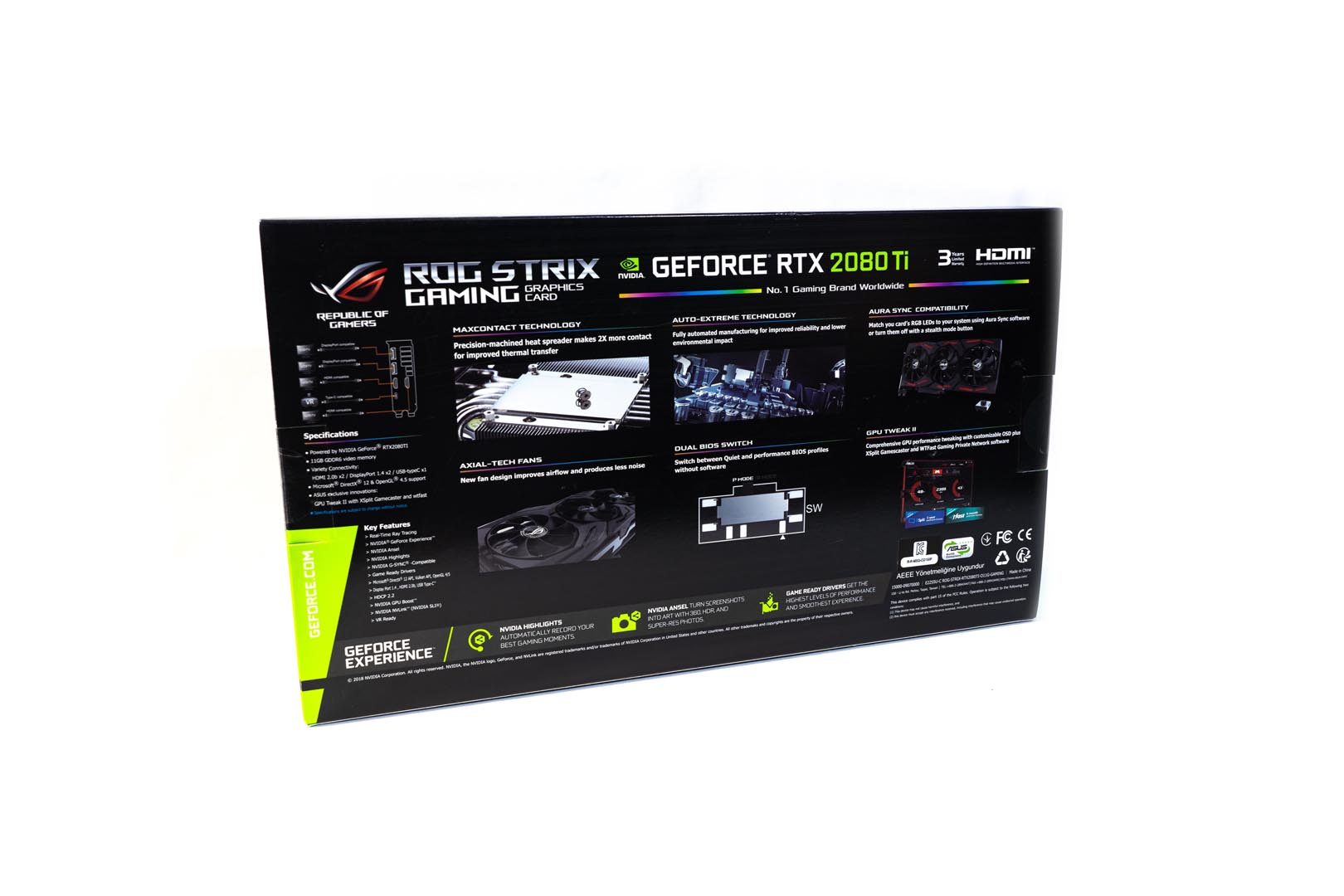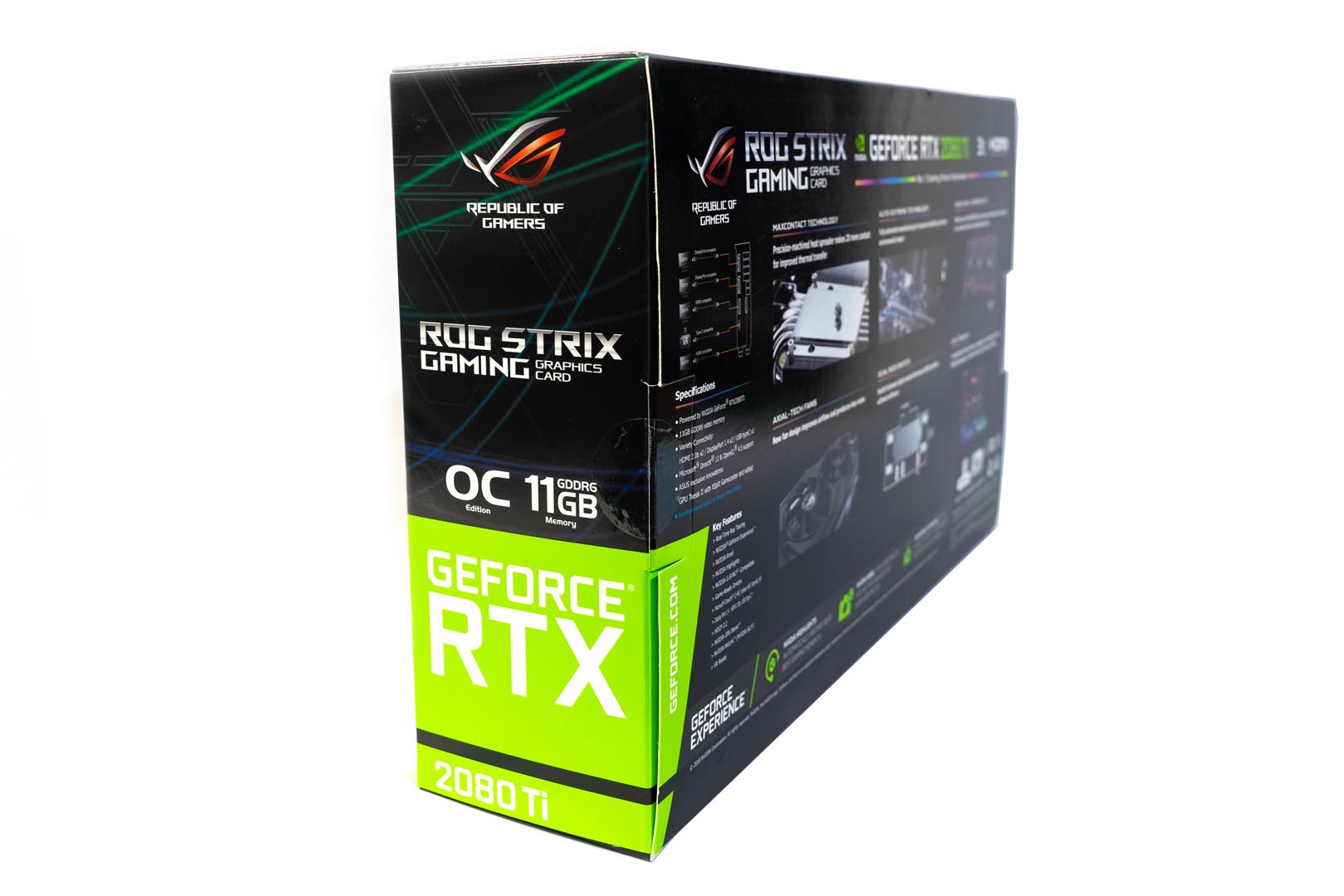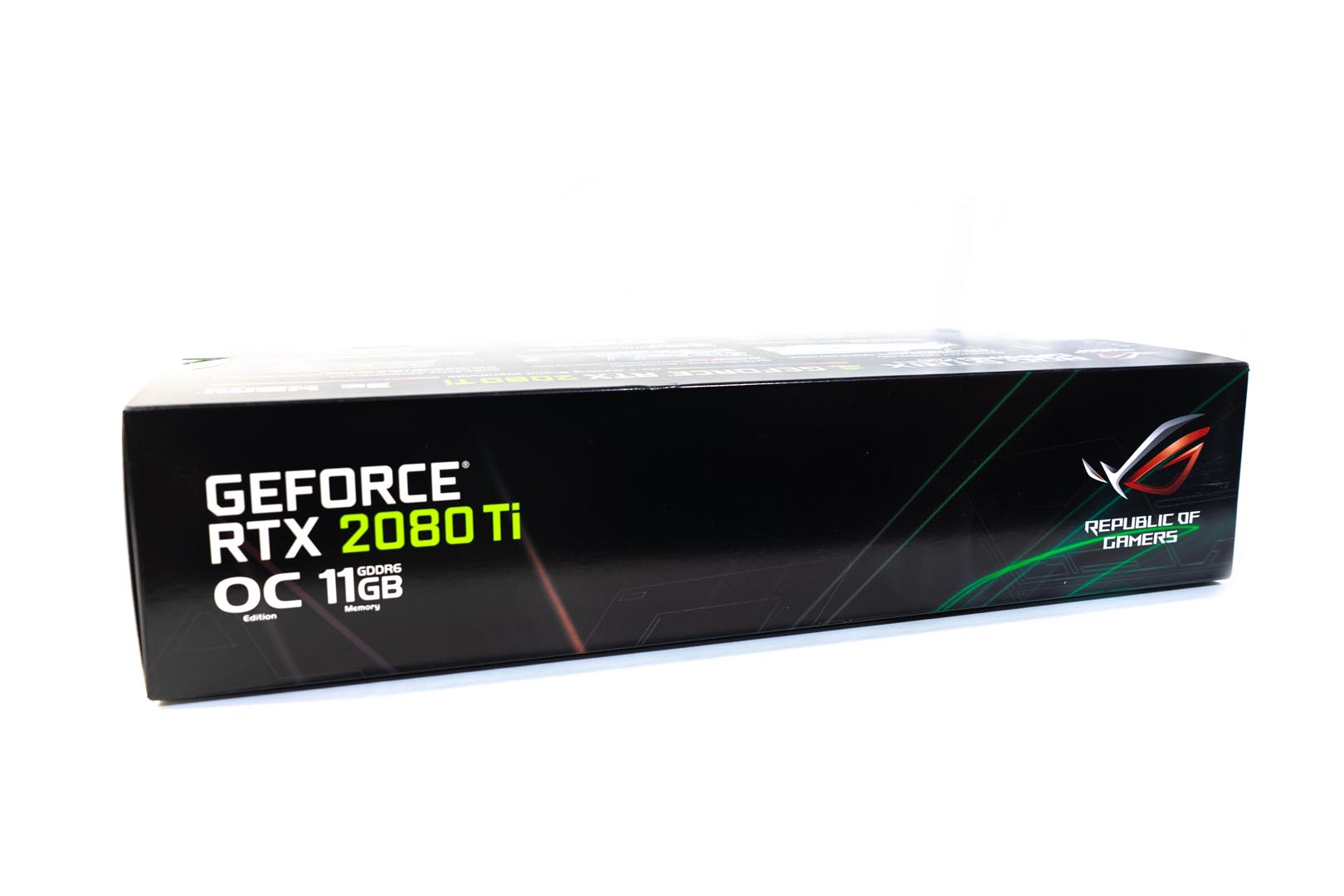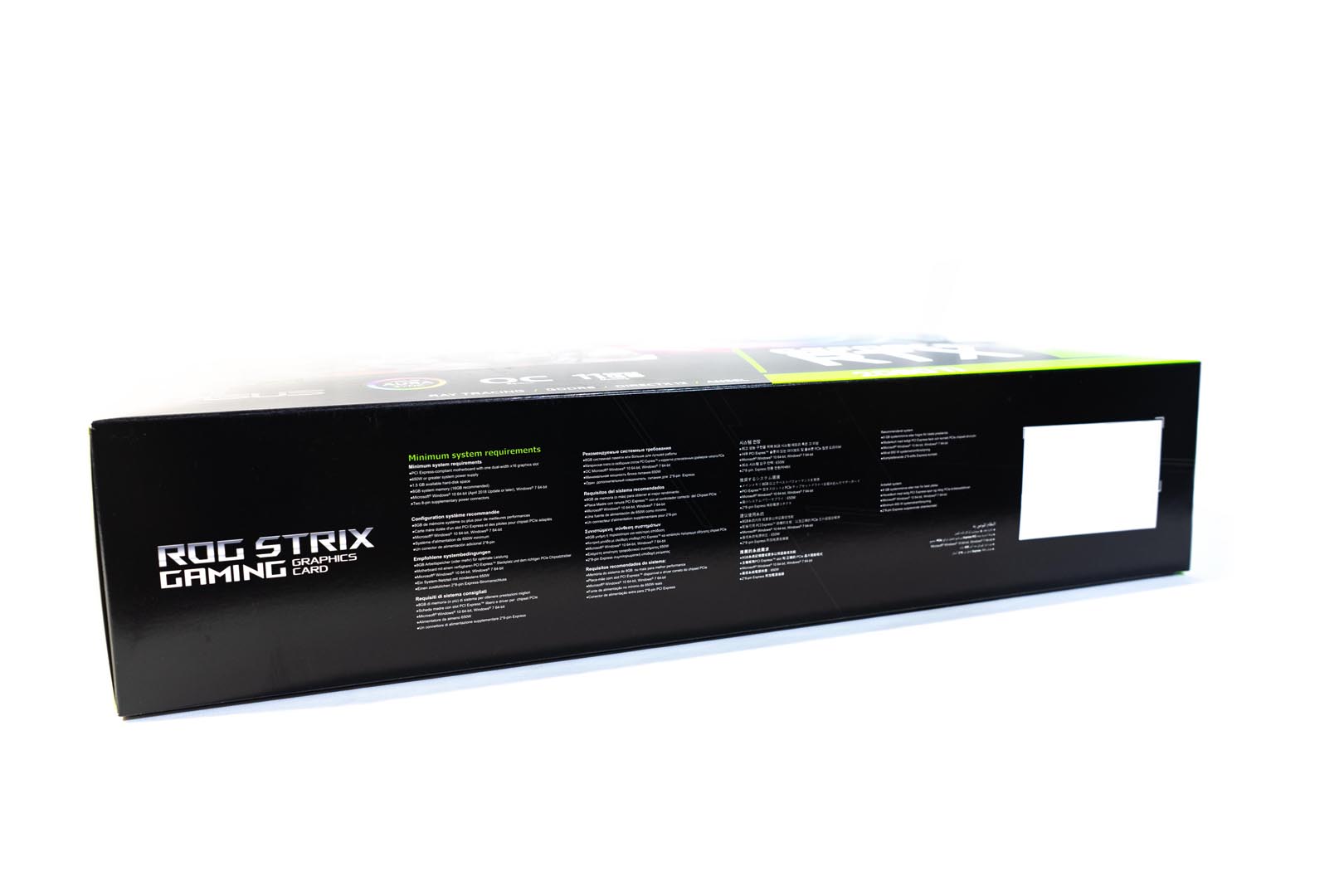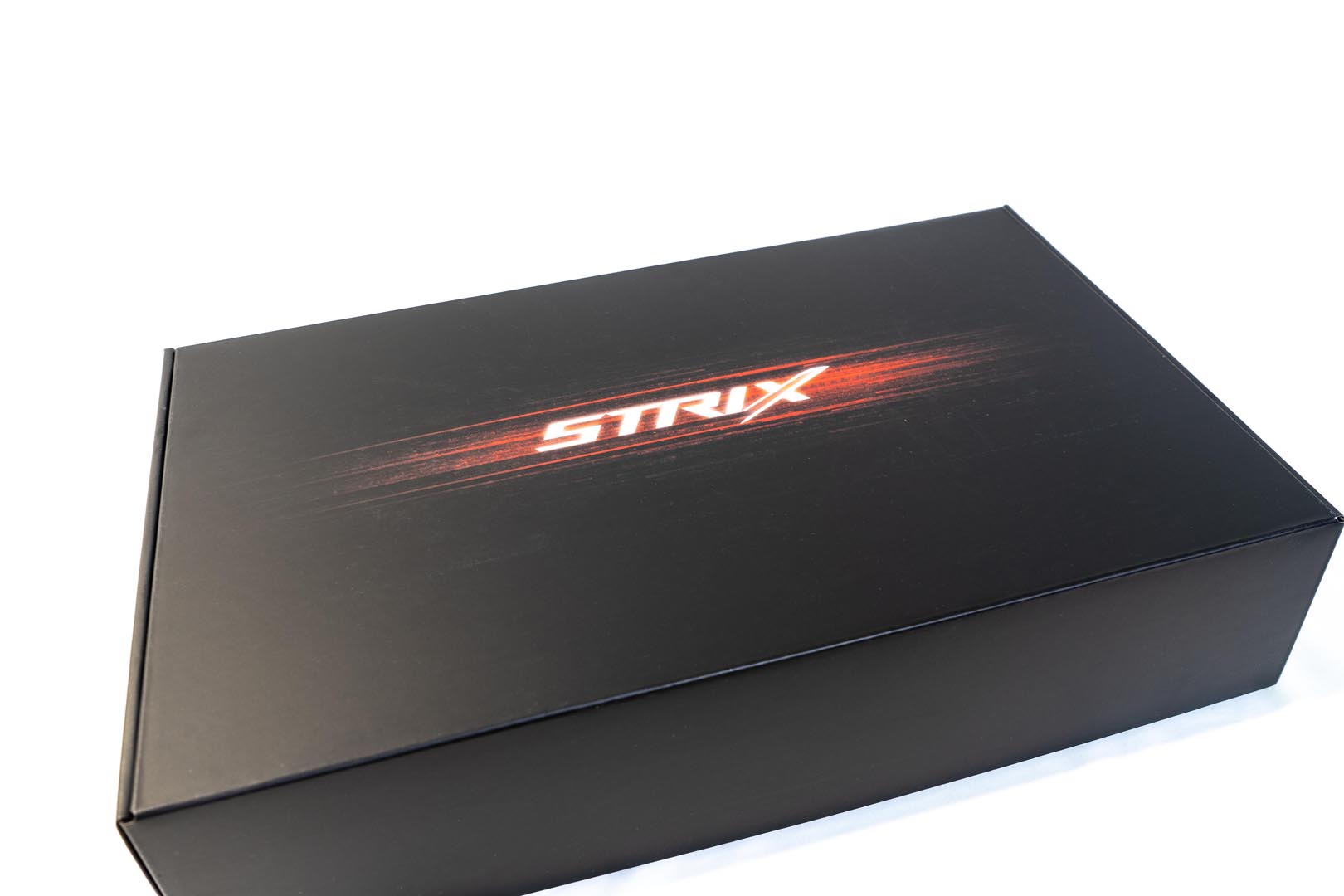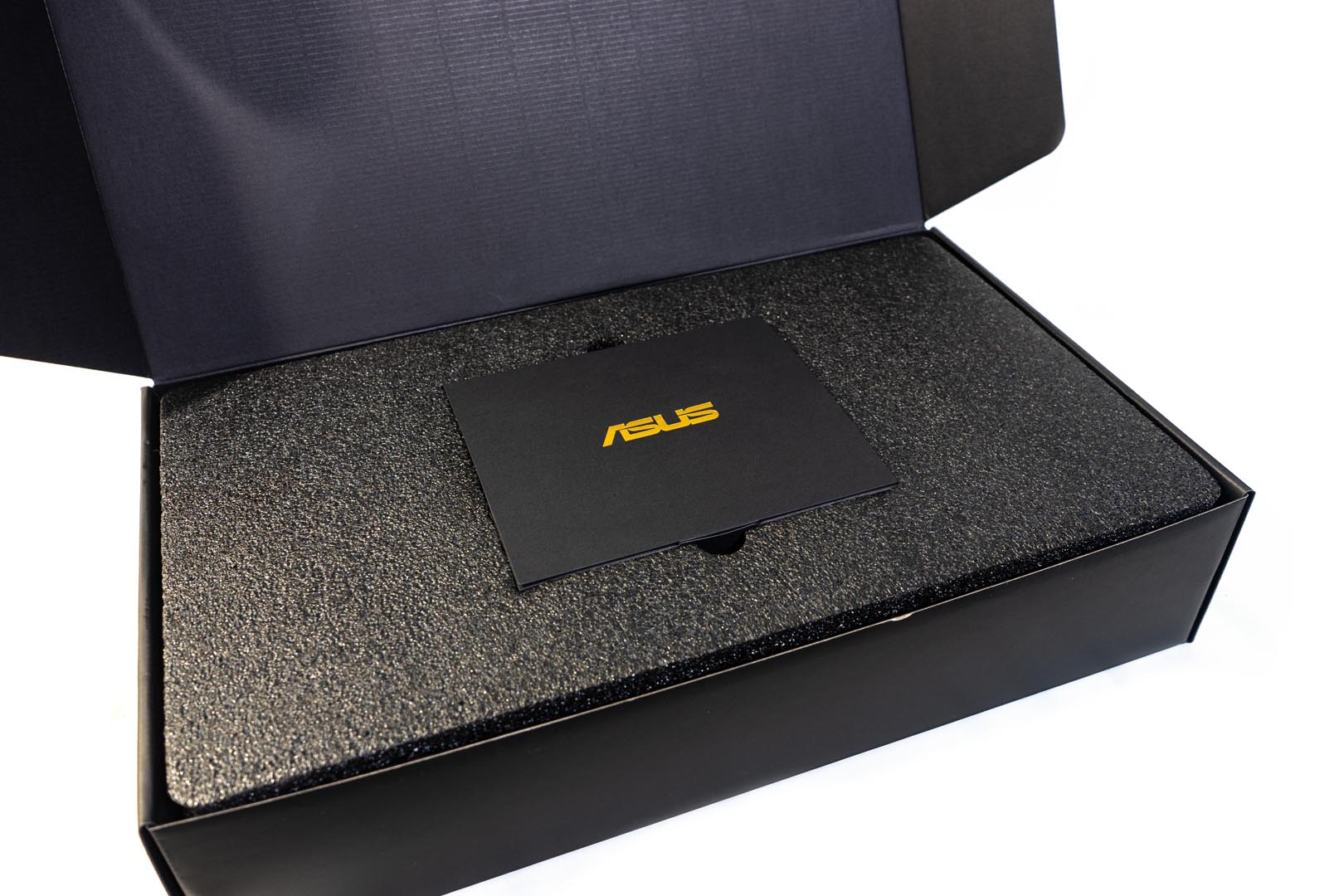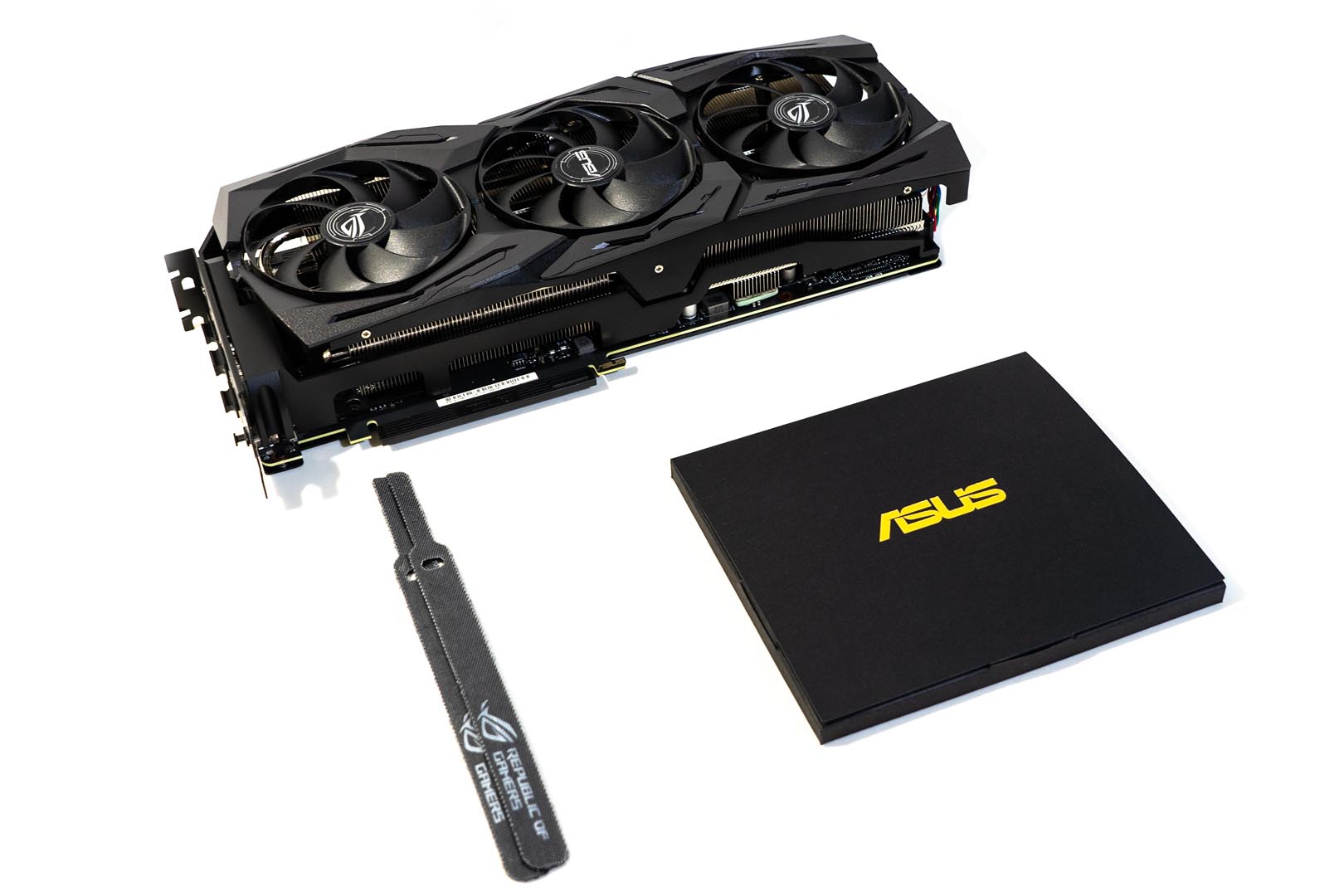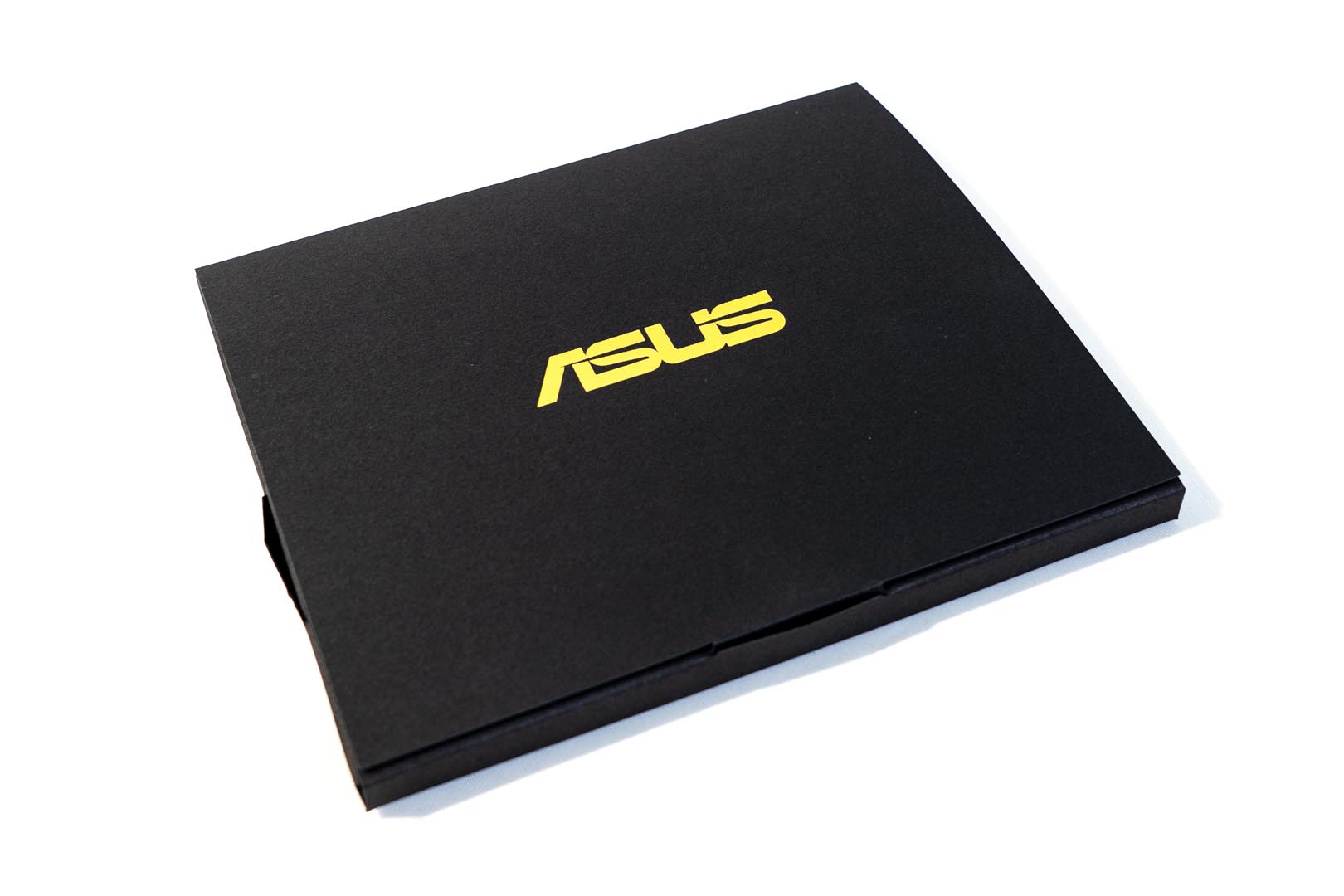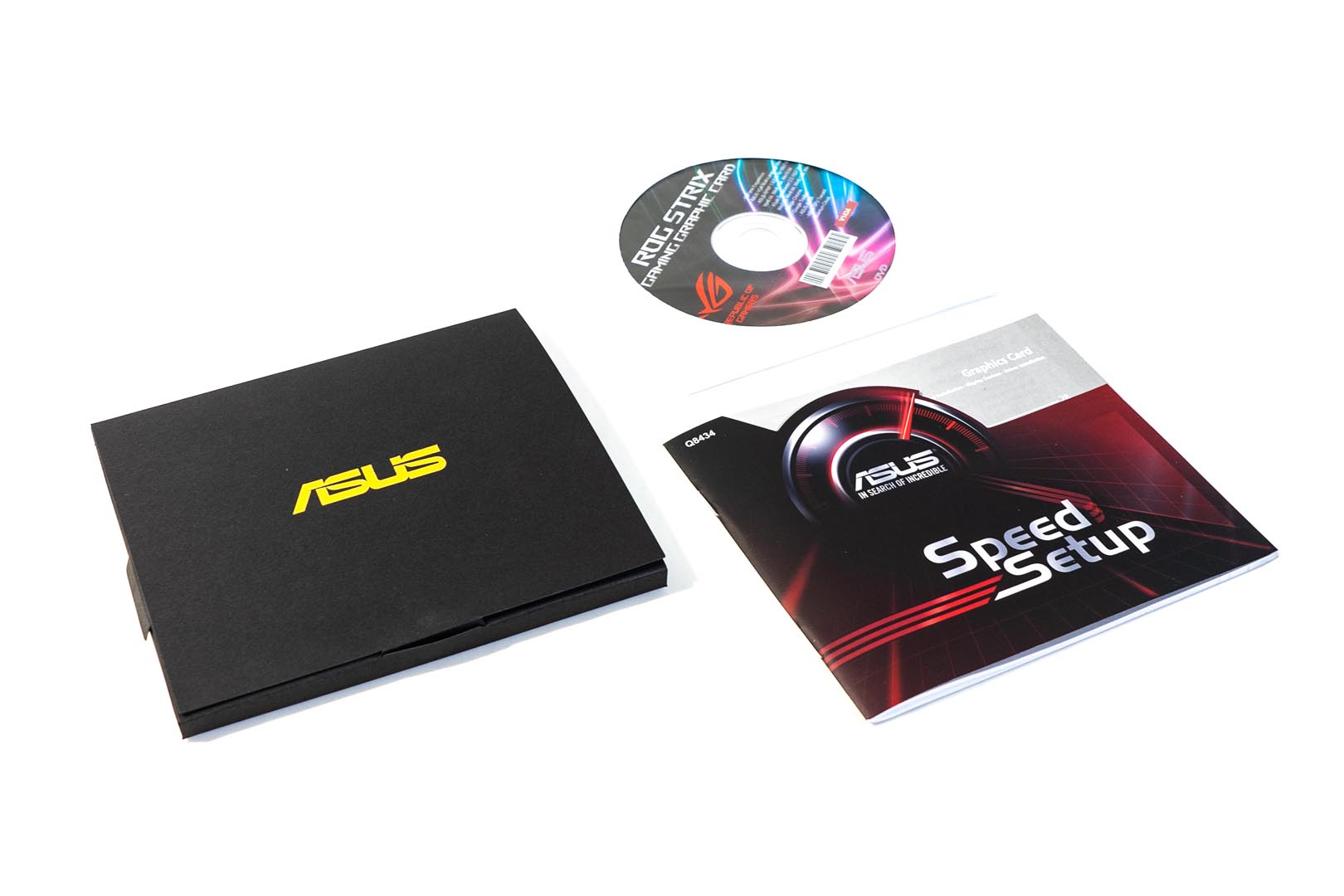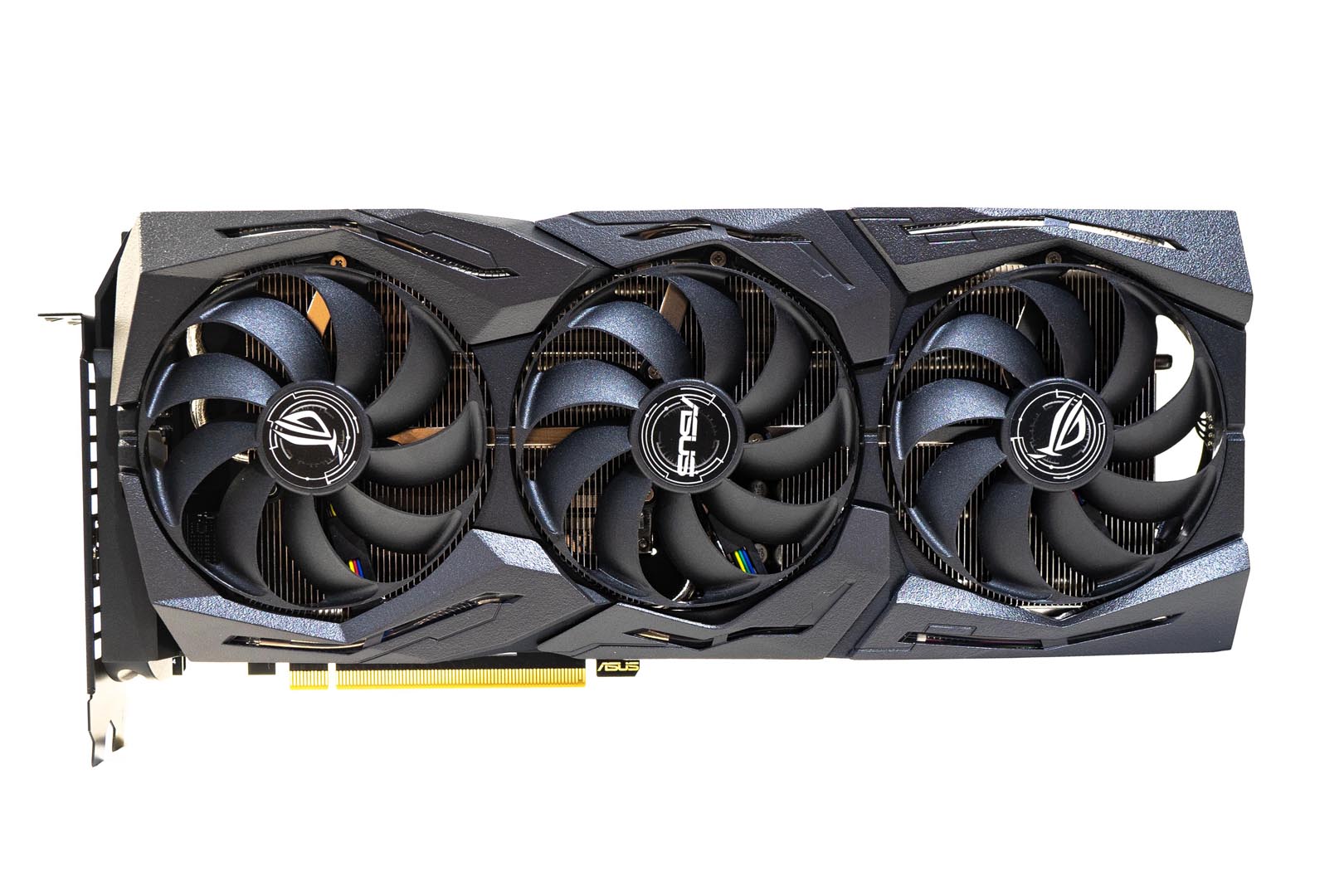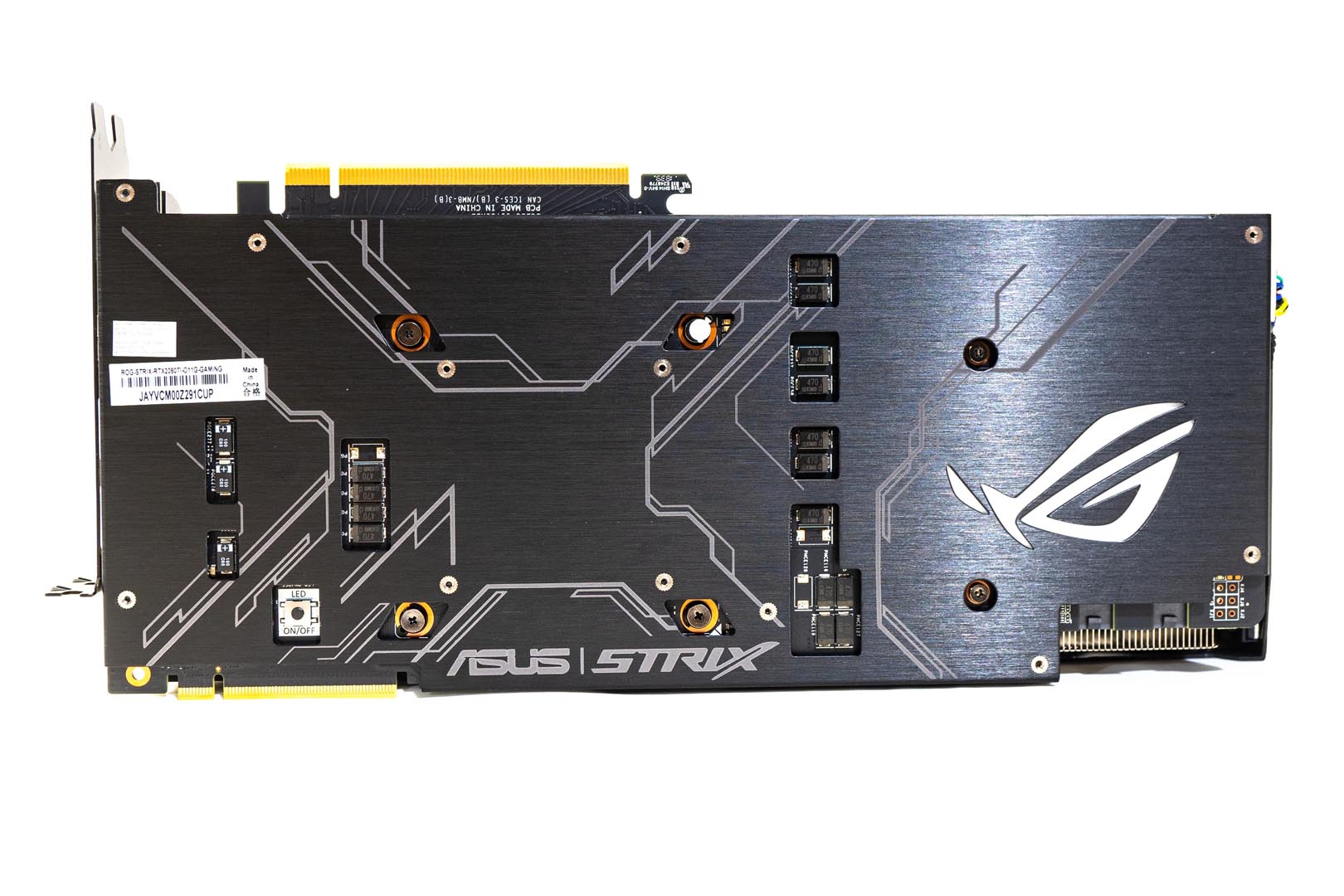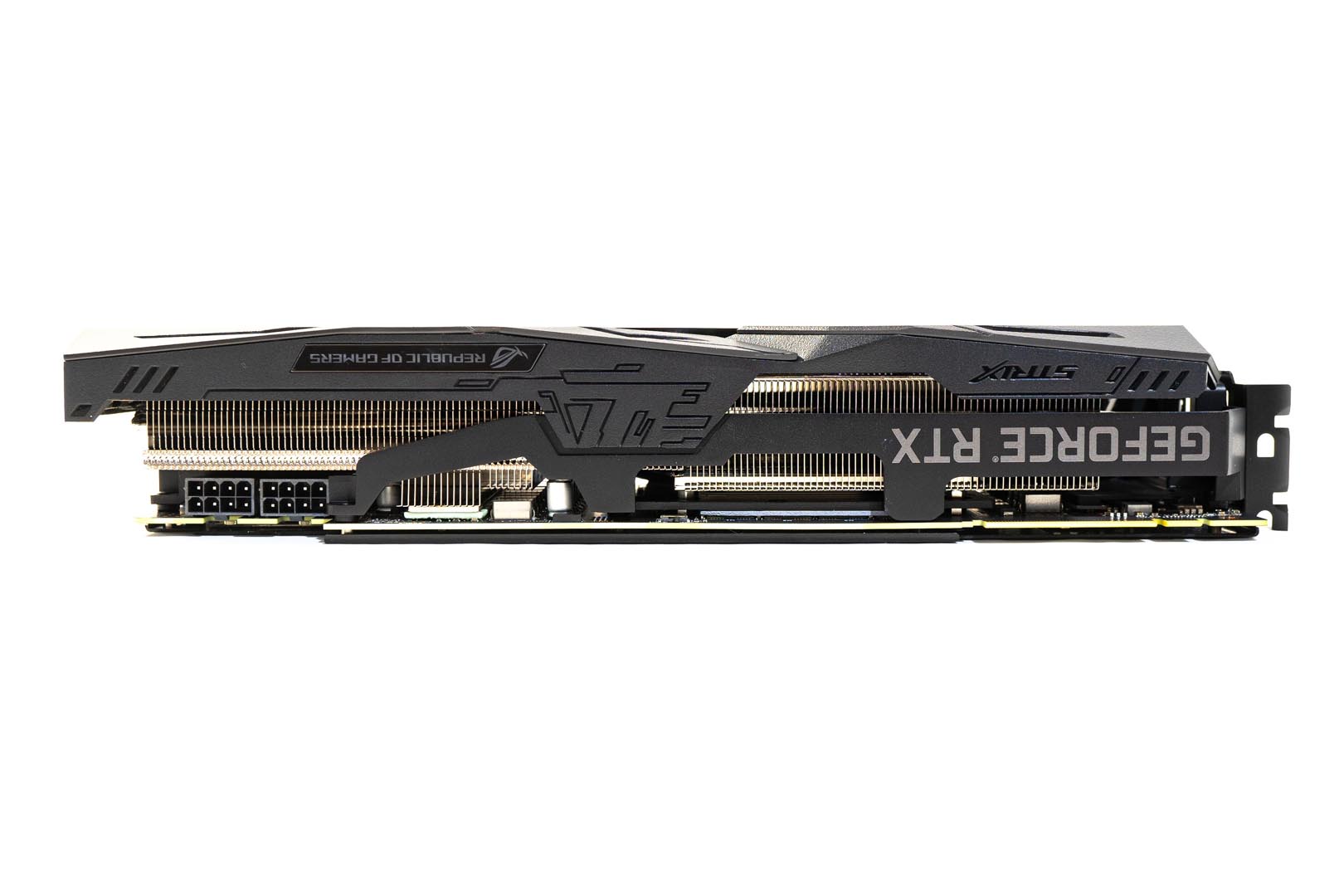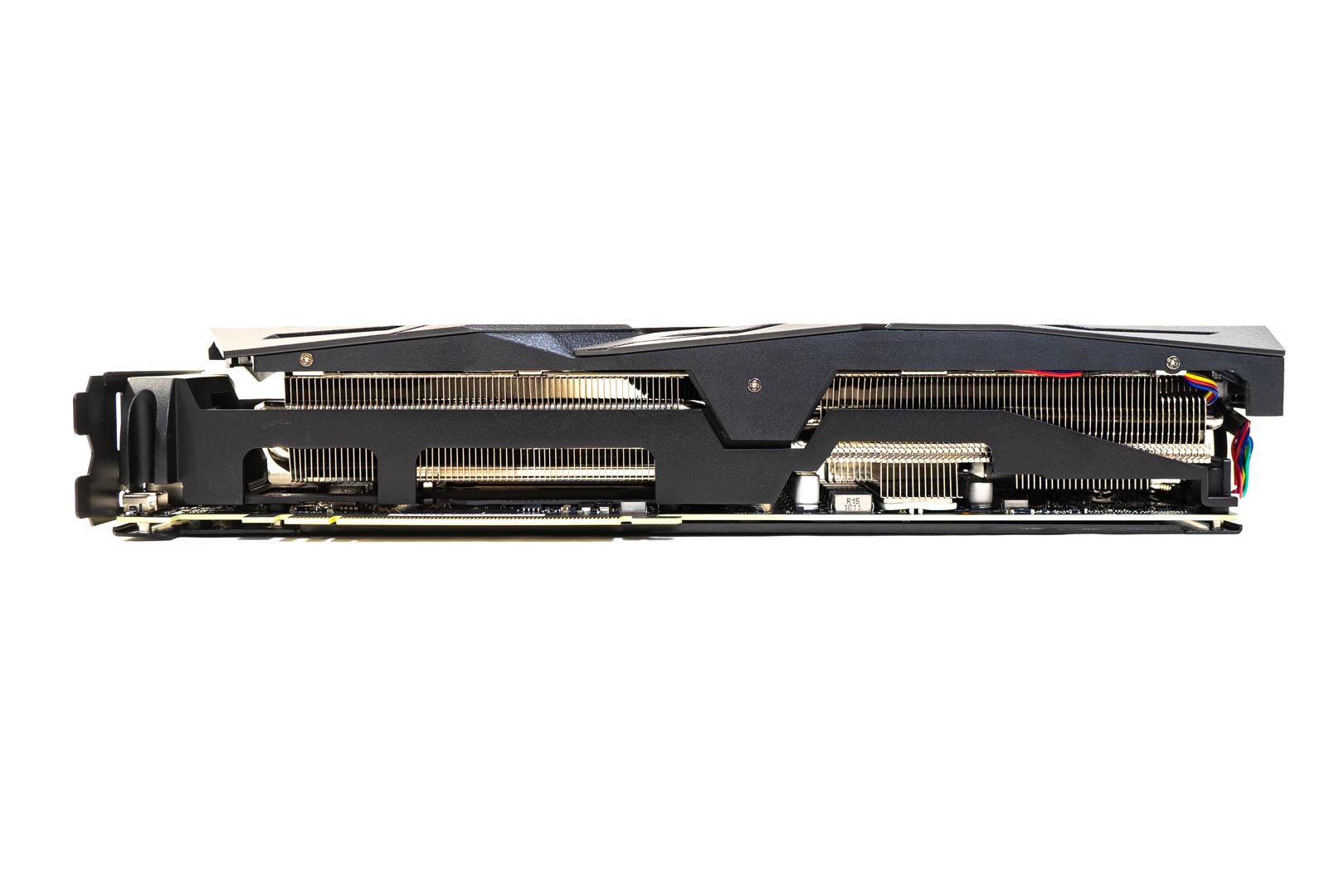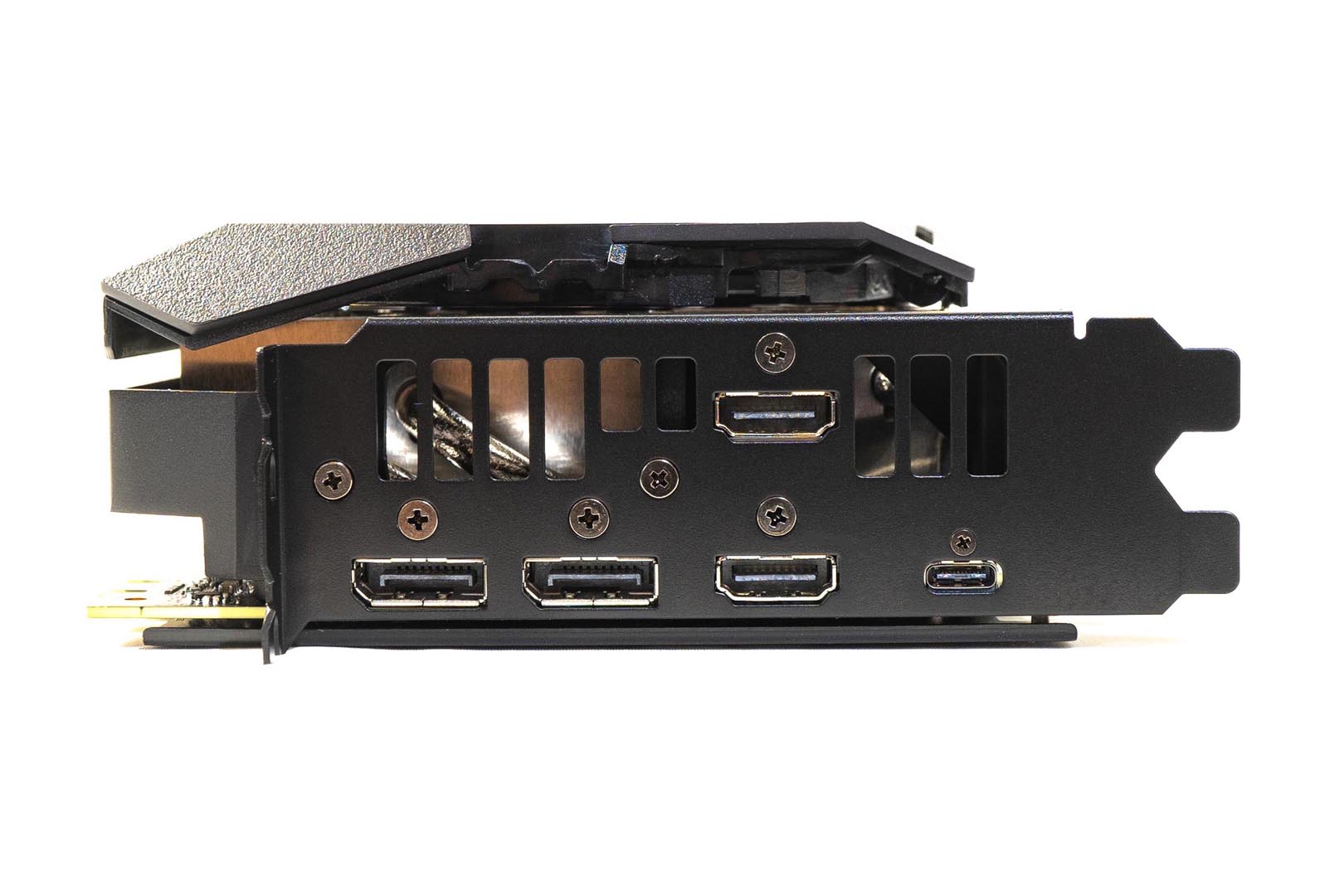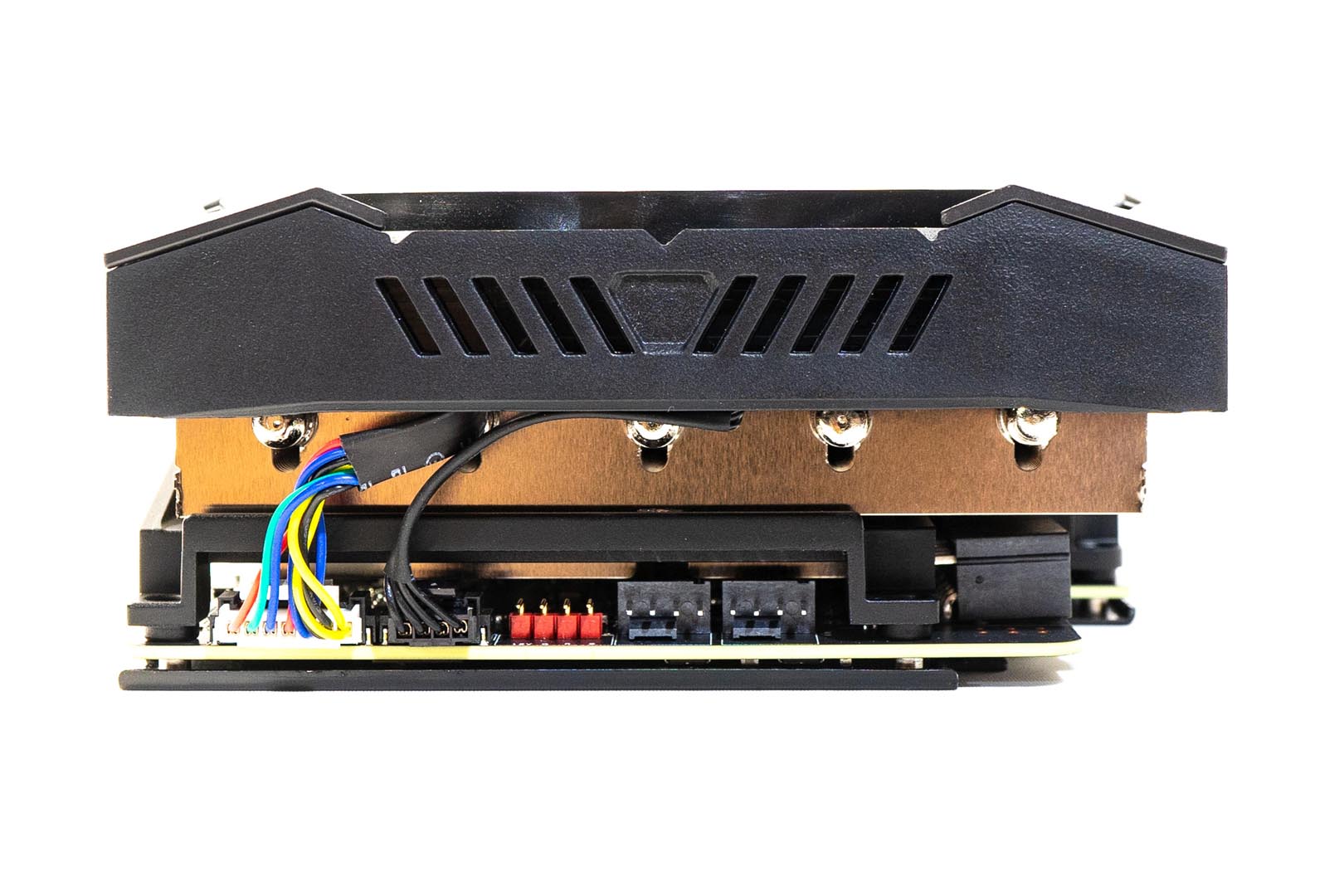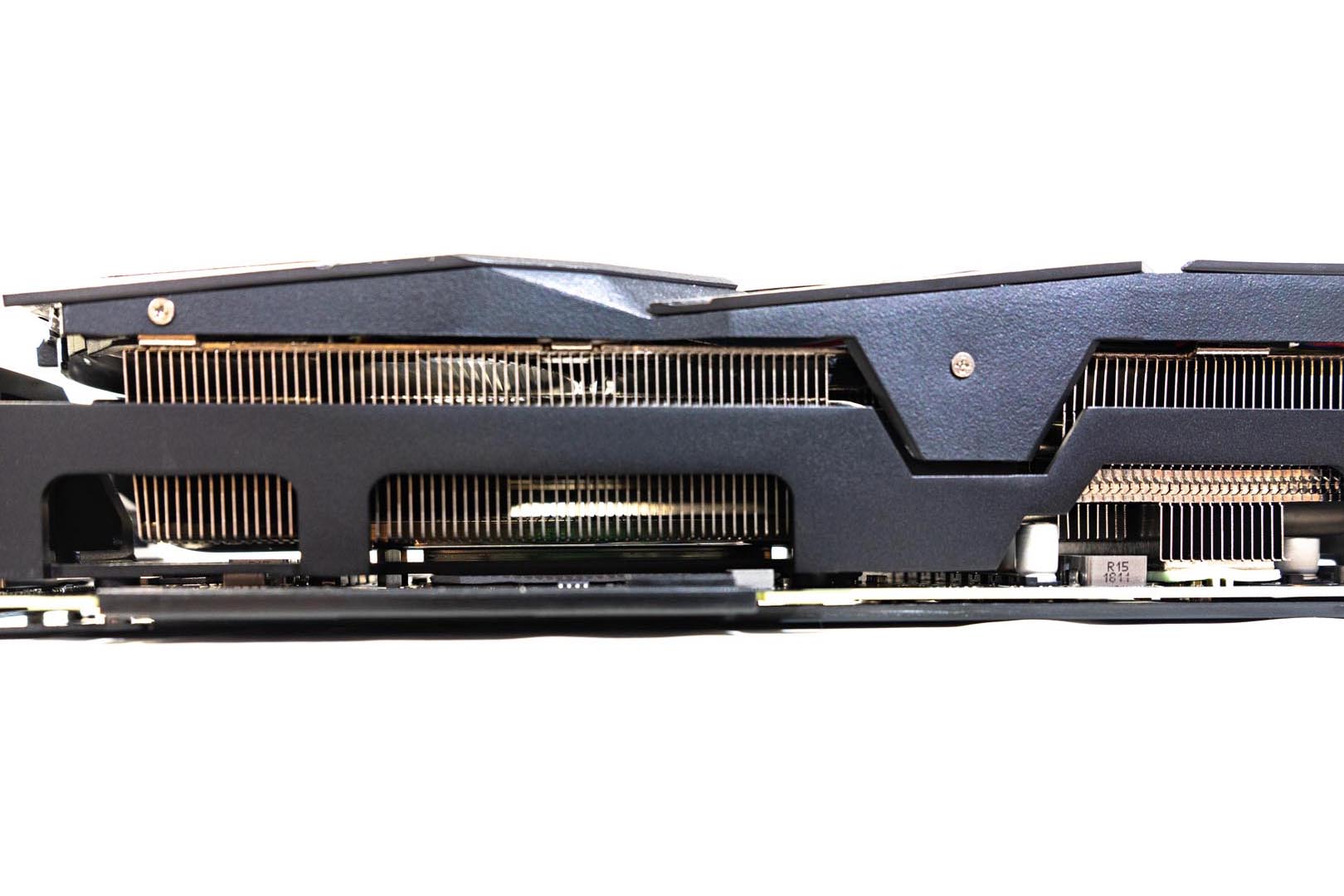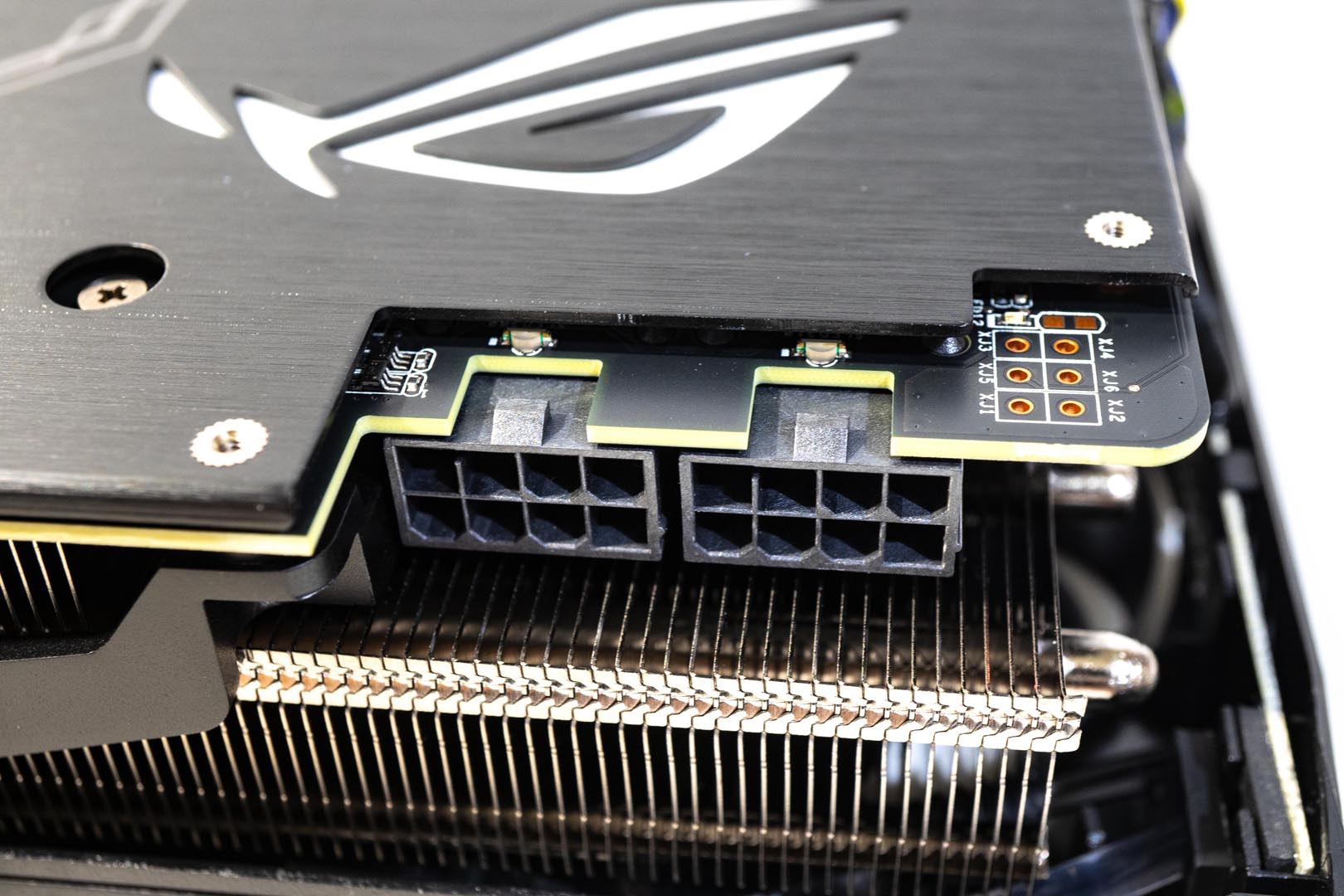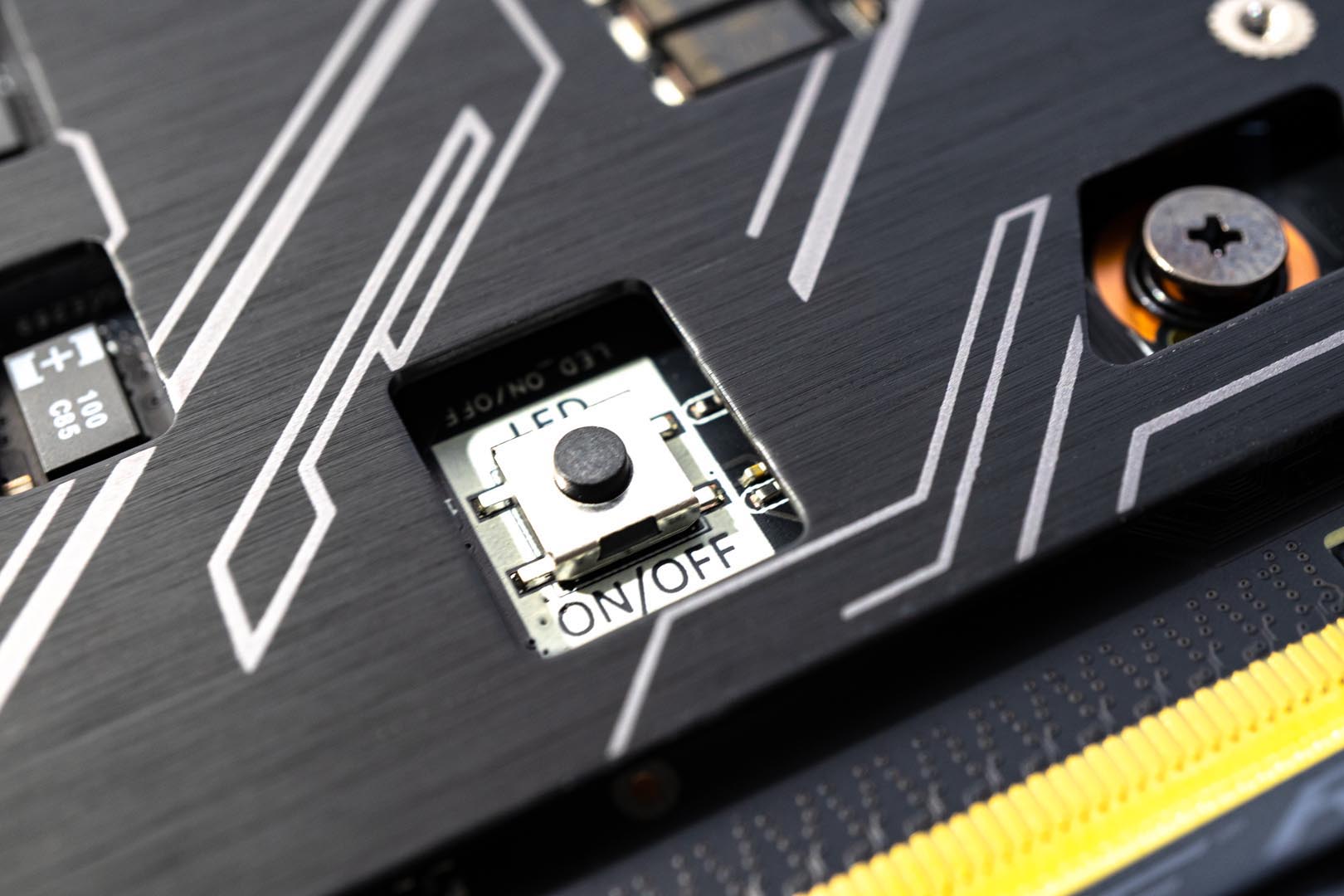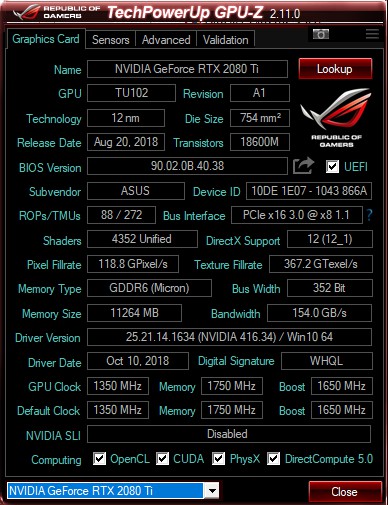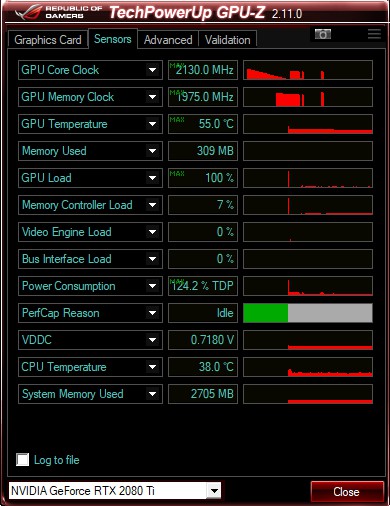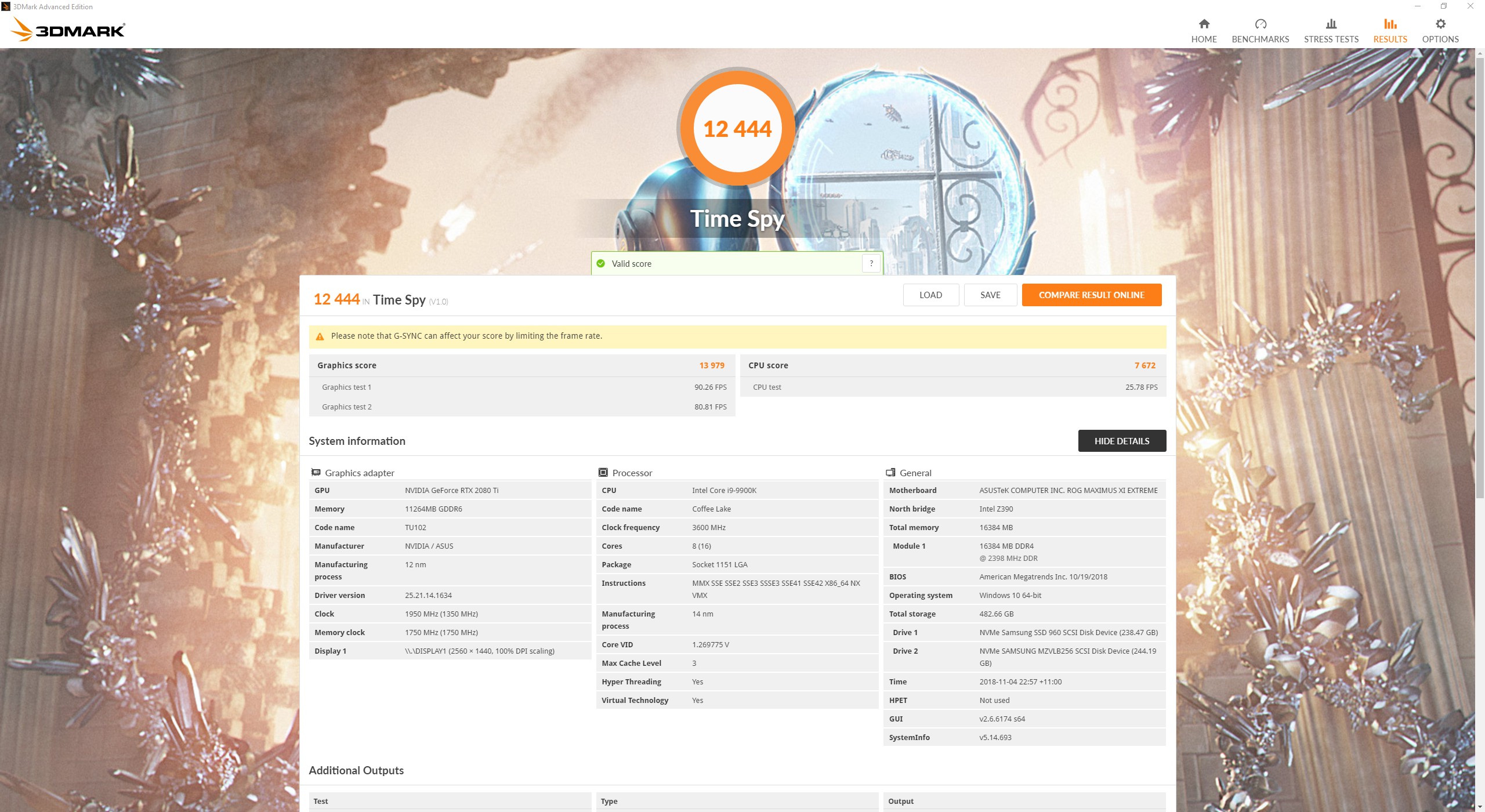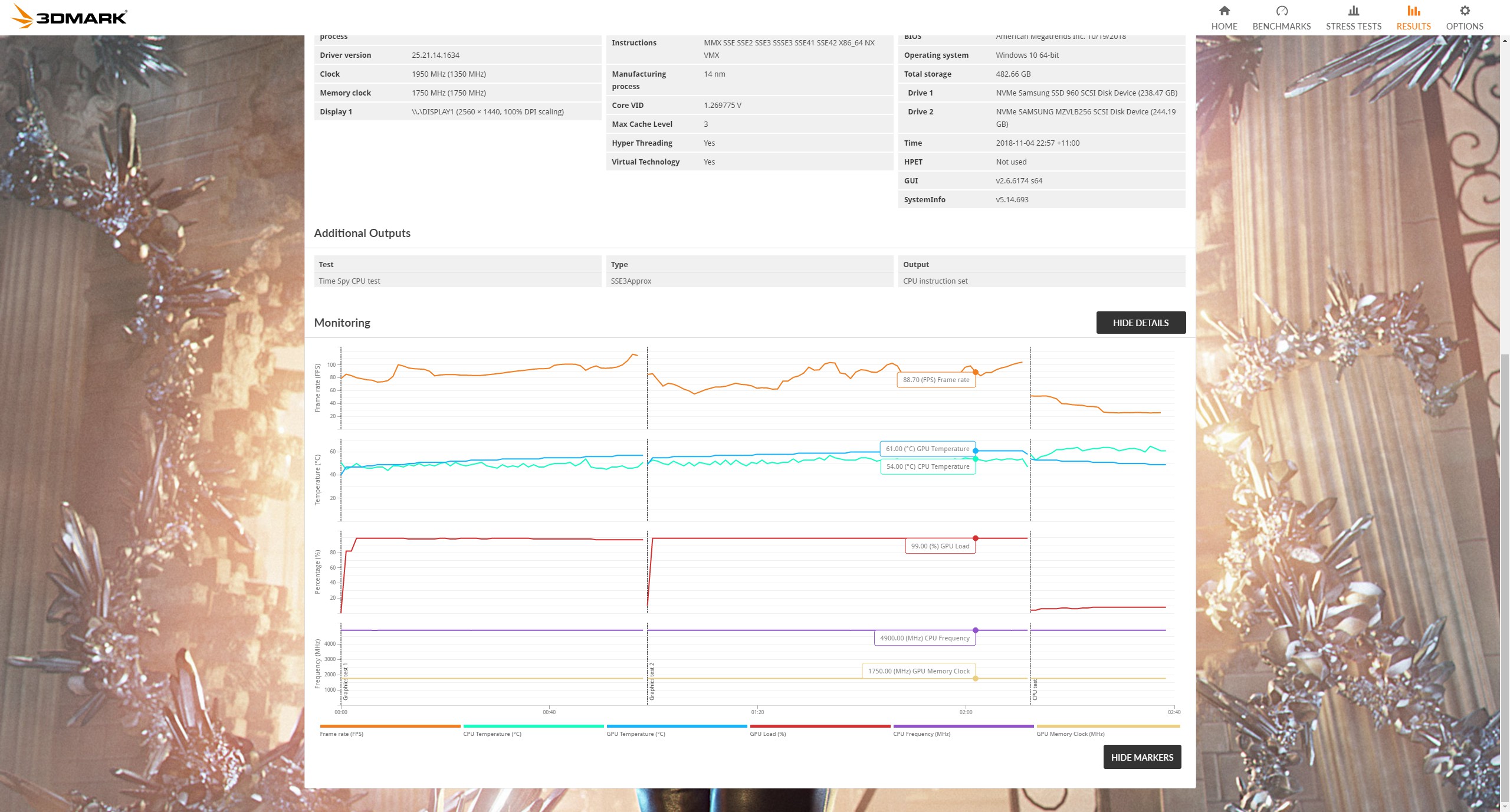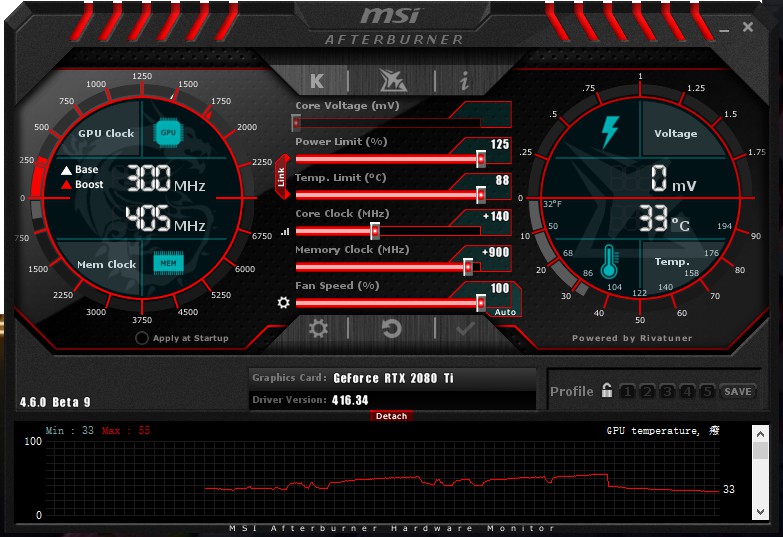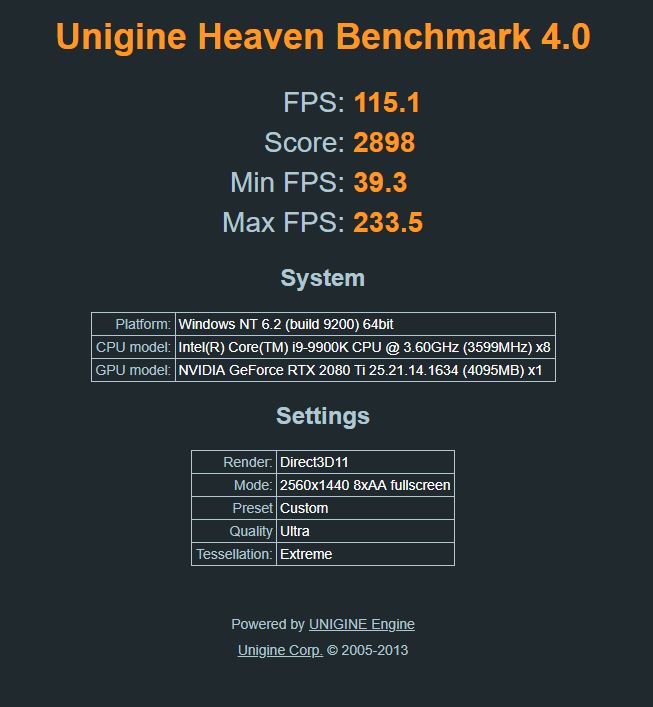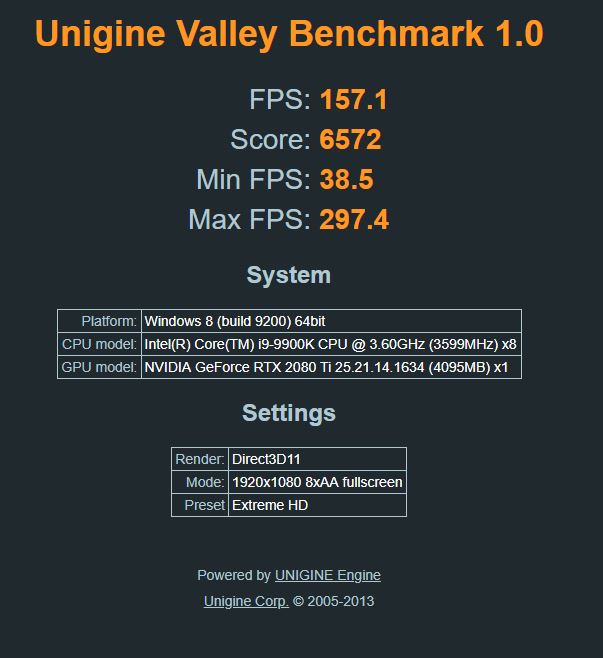ASUS has released their flagship ROG Strix RTX 2080 Ti gaming video cards into the Australia market. With NVIDIA’s latest Turing architecture, the three cards support GDDR6 memory and VirtualLink specifications. In addition, ASUS has added four exclusive functions: dustproof (IP5X international dustproof rating), noise prevention, heat protection, and hardware protection, which can greatly improve the operational stability and durability of the card.
This review covers the latest ROG Strix RTX 2080 Ti OC edition, let’s dive into the details!
Package appearance
The package design is nearly the same as their previous version
Package Front
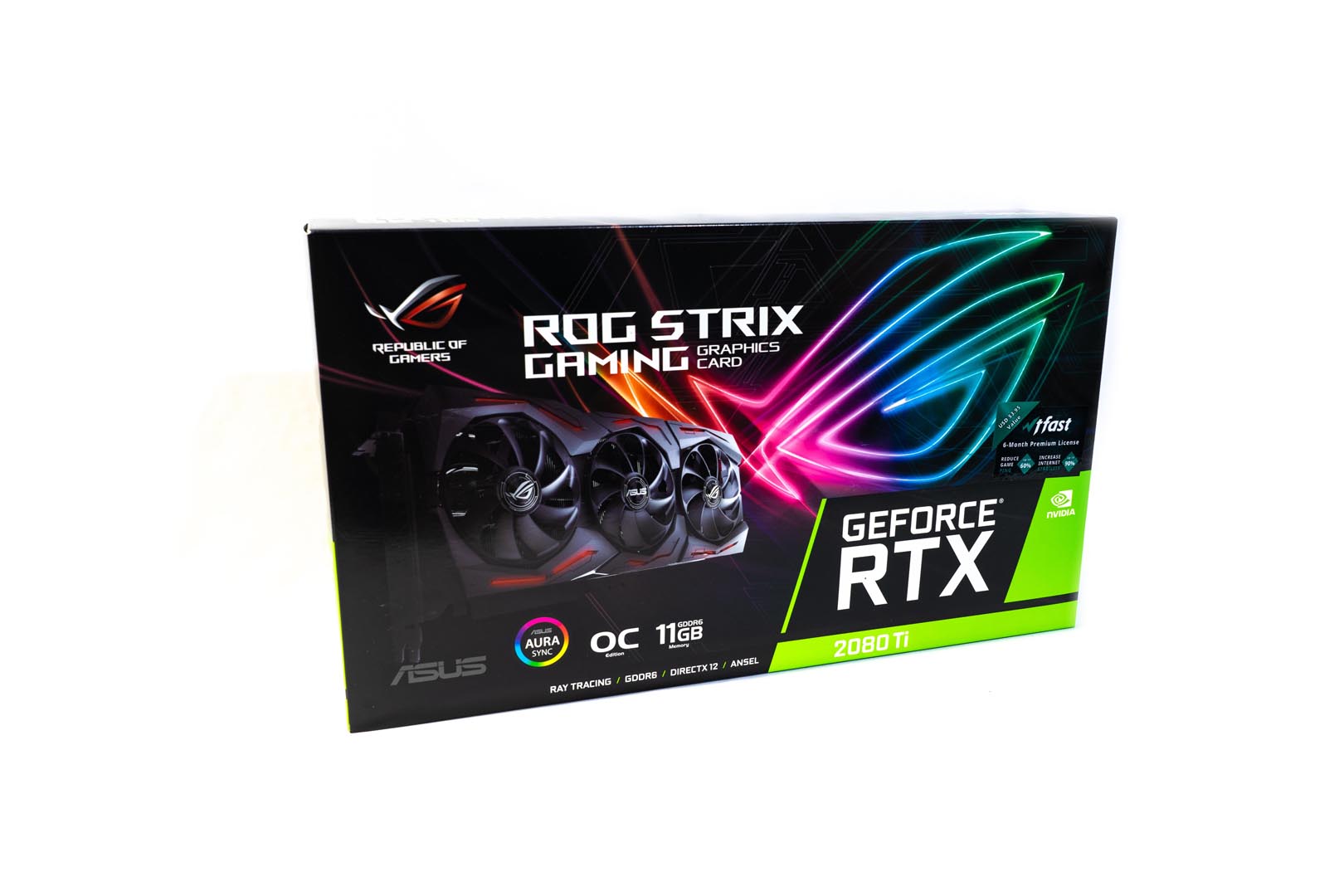
Product Analysis
The main body of the video card
The whole card utilises premium materials, equipped with the latest Axial-tech fans. It features a long fan blade and an annular seal to reduce the size of the fan hub, which enhances the speed and improves the cooling, while drastically reducing the noise it produces. At the same time, in order to improve the quality of the ROG Strix series, the PCBs of this model are built completely by machine, a process ASUS has dubbed ‘Auto-Extreme’, which finishes all the through-holes and surface soldering at one time. This reduces the thermal strain and improves the stability of the graphics card.
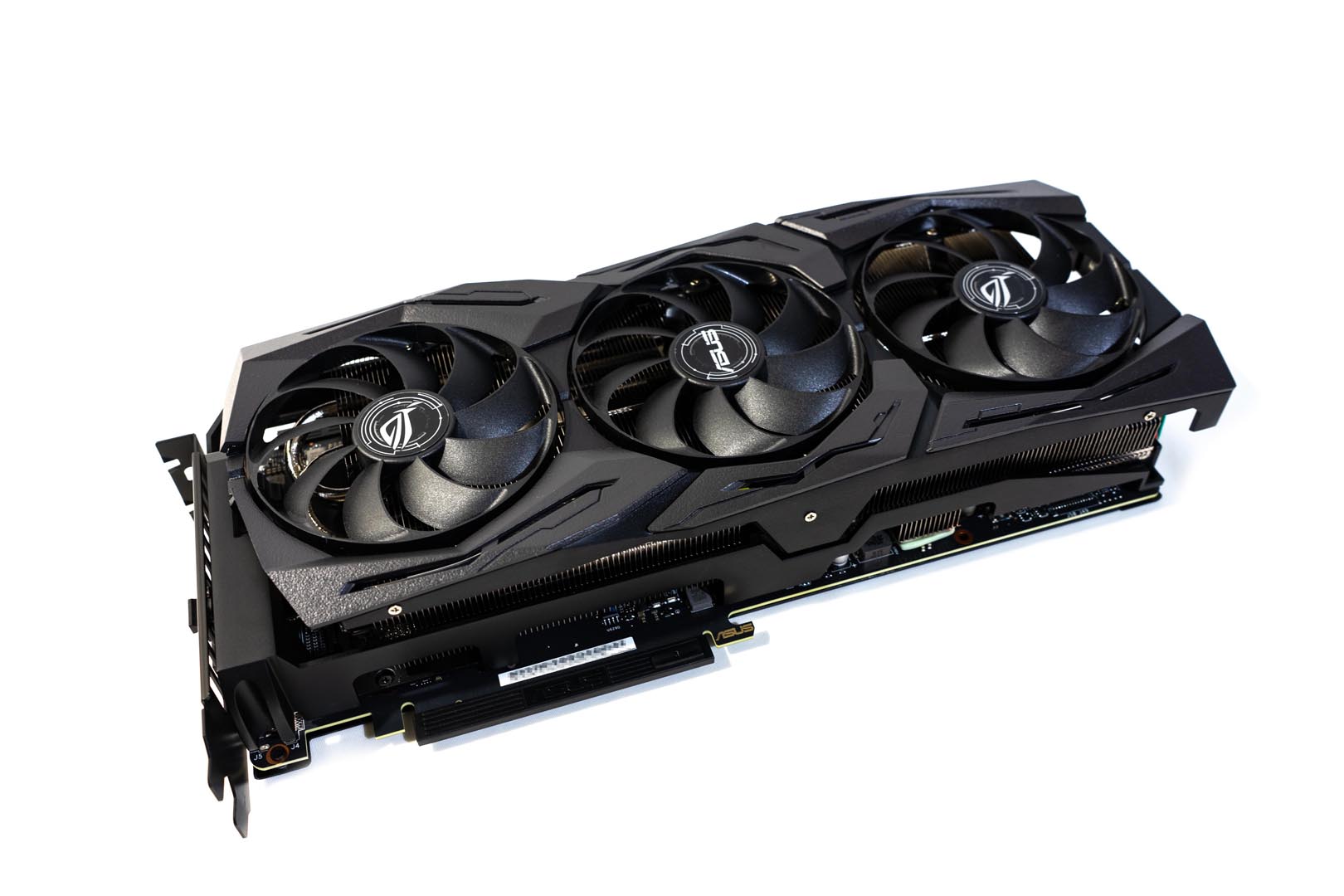
An inner metal stand holder has been implemented on the video card to ensure the card will never bend. This is an issue we have witnessed in many previous generations

The rear I/O, different from other brands, ASUS has added an additional HDMI Socket
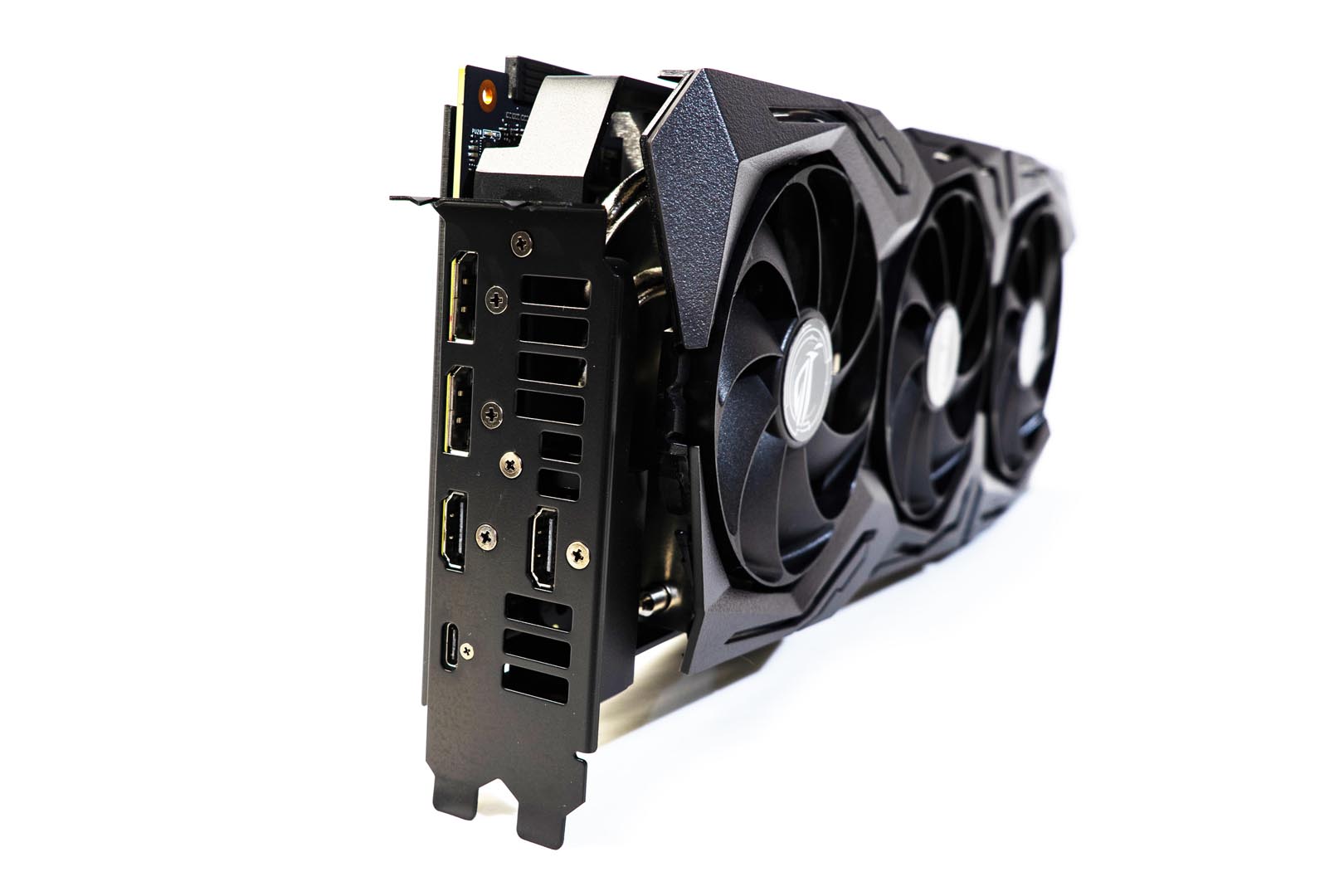
The top I/O, includes an RGB header(12v 4pin) and 2x4pin PWM fan headers

The Golden finger for PCI-E & NVLINK
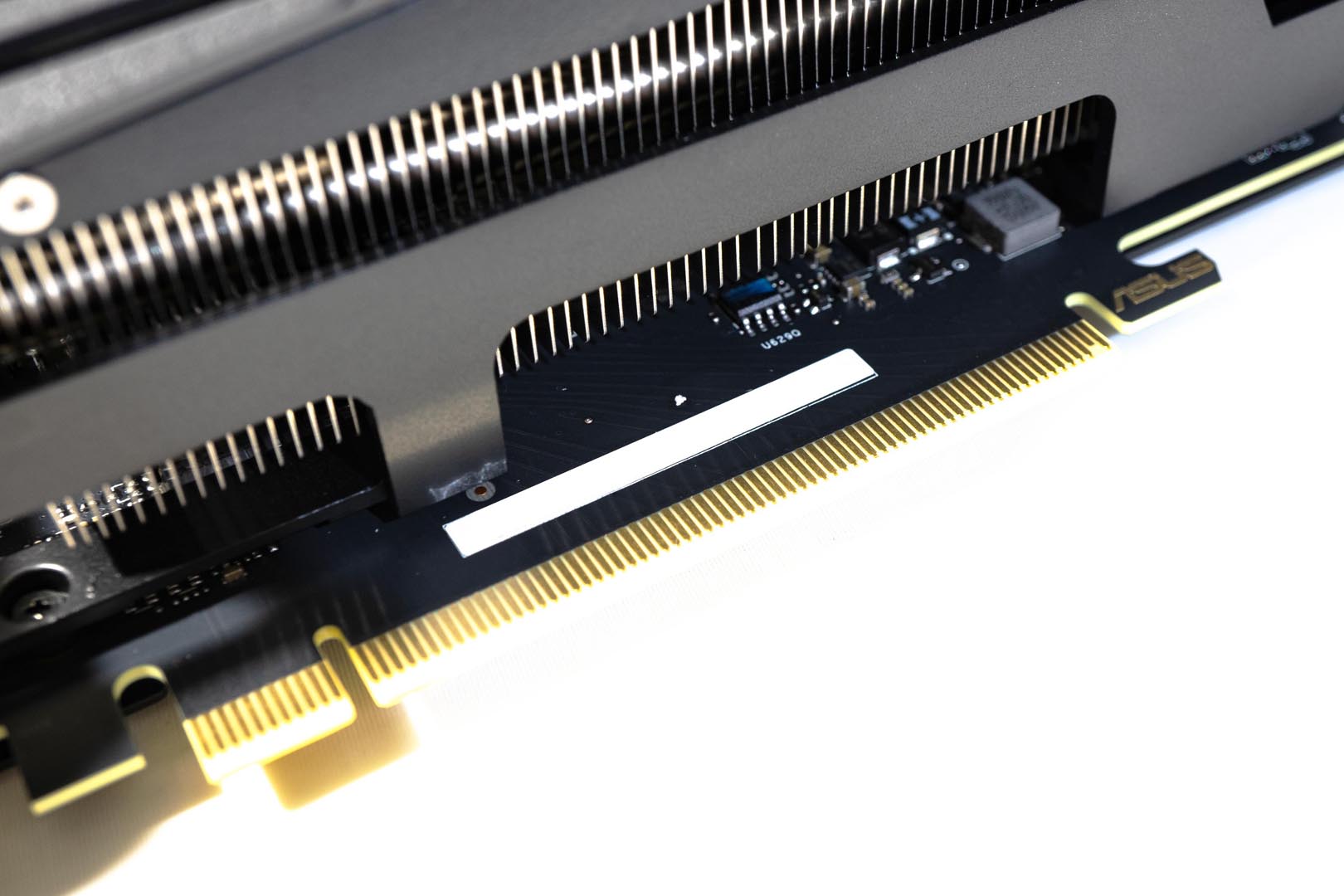
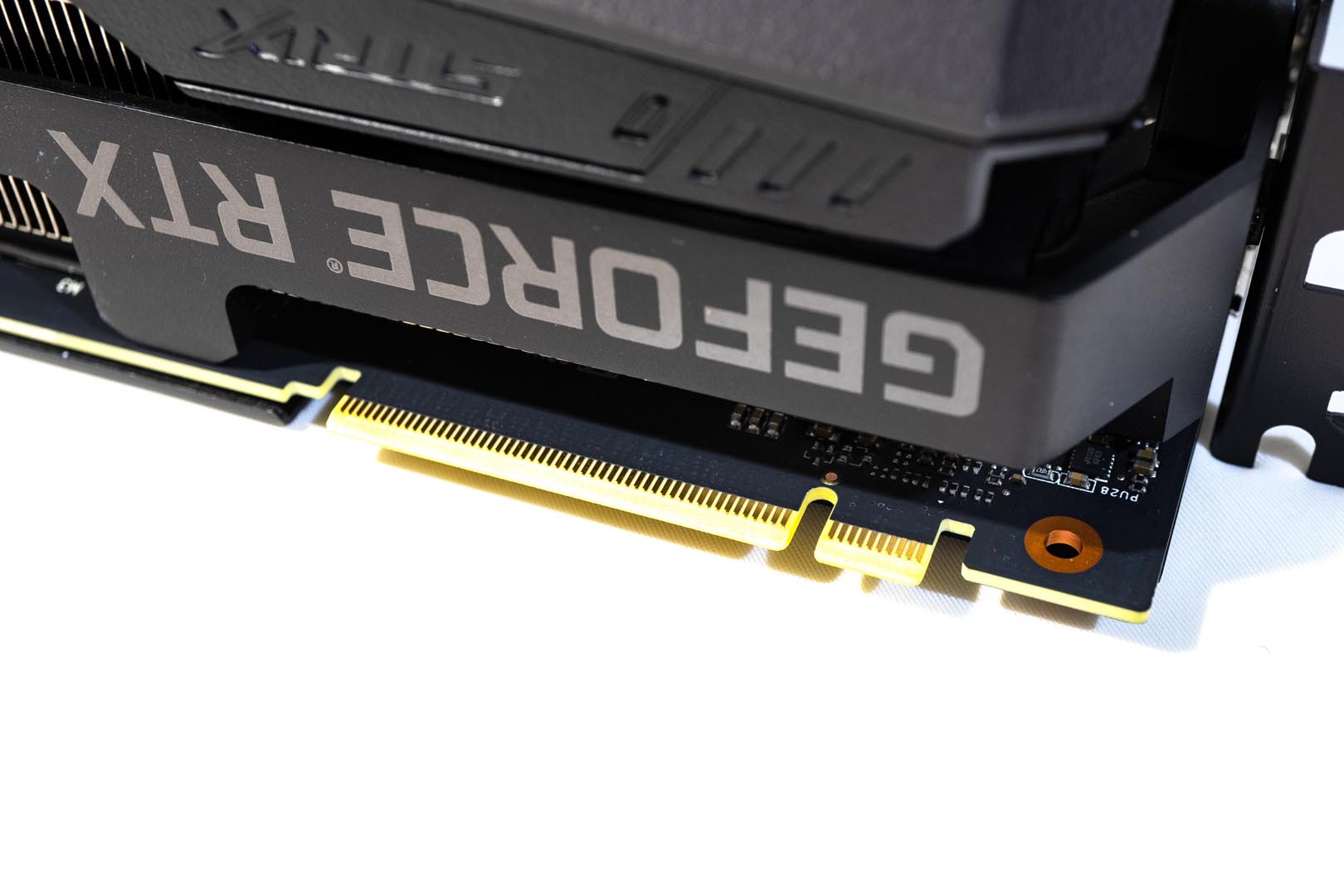
The bios mode switch
The 19-phased superalloy power supply will demand more than 500Ws of input power. The unique dual BIOS switch allows players to choose between silent mode and performance. Even in performance mode, the noise is only 5dB higher than the ambient noise.
In the silent mode, with furmark burn test running for a long period of time, the fan speed only runs around 30%, the noise is almost inaudible, and the heat consumption is better than most aftermarket RTX 2080 Tis
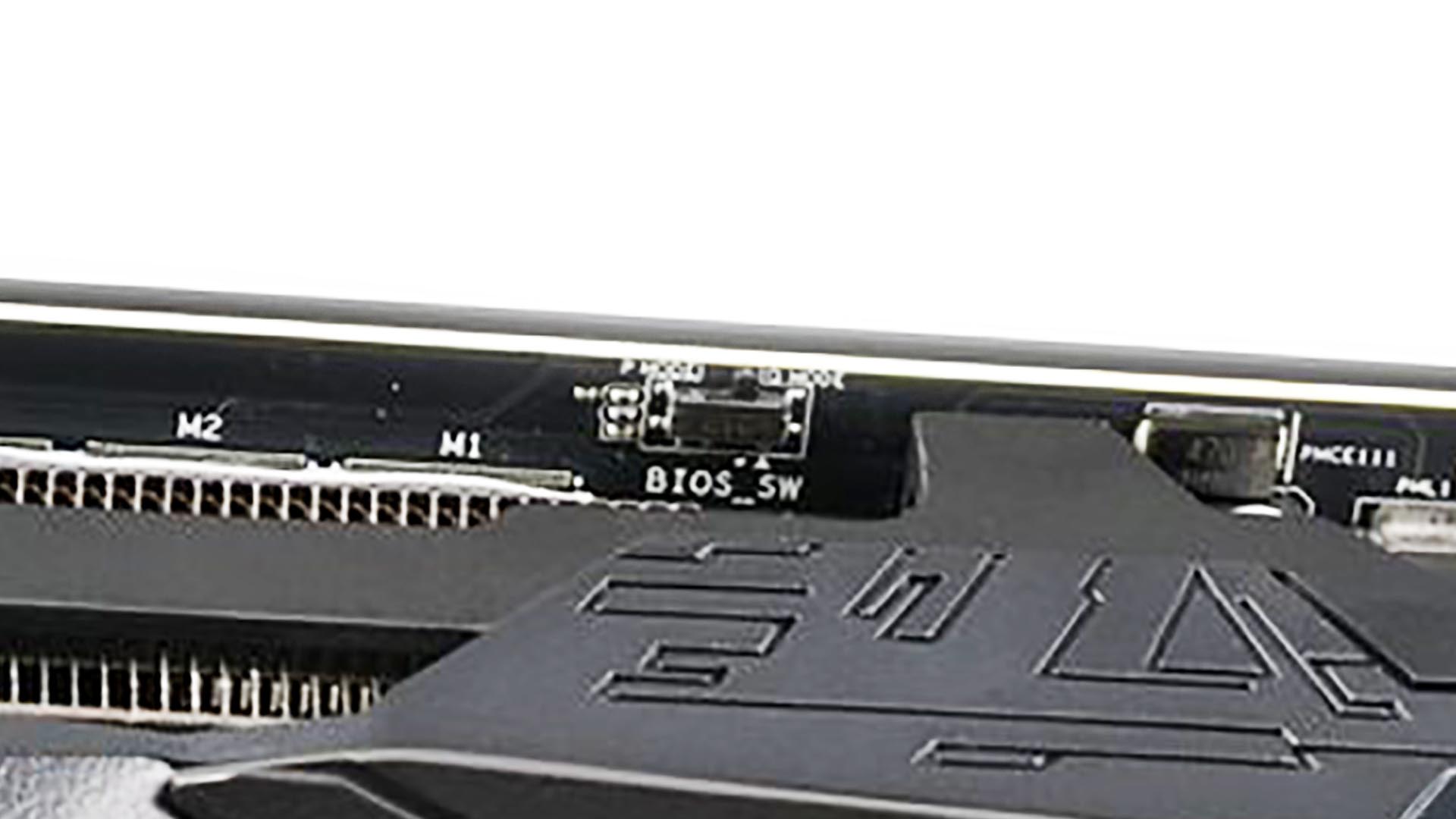
Run-time Benchmark Test
The Graphic card details:
MODEL | ROG-STRIX-RTX2080TI-O11G-GAMING
GPU | NVIDIA® GeForce RTX™ 2080 Ti
VRAM | 11GB GDDR6
CUDA | 4352
I/O | 2 x HDMI 2.0b, 2 x DisplayPort 1.4, 1 x USB Type-C
API | Microsoft DirectX 12, OpenGL 4.5
EC | OC Mode – GPU BASE/Boost Clock : 1350 MHz / 1665 MHz
MC | 14000 MHz
SIZE | 30.47 x 13.04 x 5.41 cm
The Benchmark platform details:
CPU | INTEL i9-9900K ◎ CORSAIR H105*(2 x CORGAR VORTEX PWM 120)
RAM | TEAM 16G Elite 2133 C15
MTB | ASUS ROG MAXIMUS XI Extreme
GRA | ASUS ROG STRIX RTX 2080TI OC 11G
SSD | SAMSUNG 970 EVO 250G
PSU | SEASONIC 850W PRIME 80+ Platinum (2080TI) + SEASONIC 750W PRIME 80+ Platinum(CPU)
TBC | STREACOM BC1 Silver
RGB | LIAN-LI STRIMER 8pin
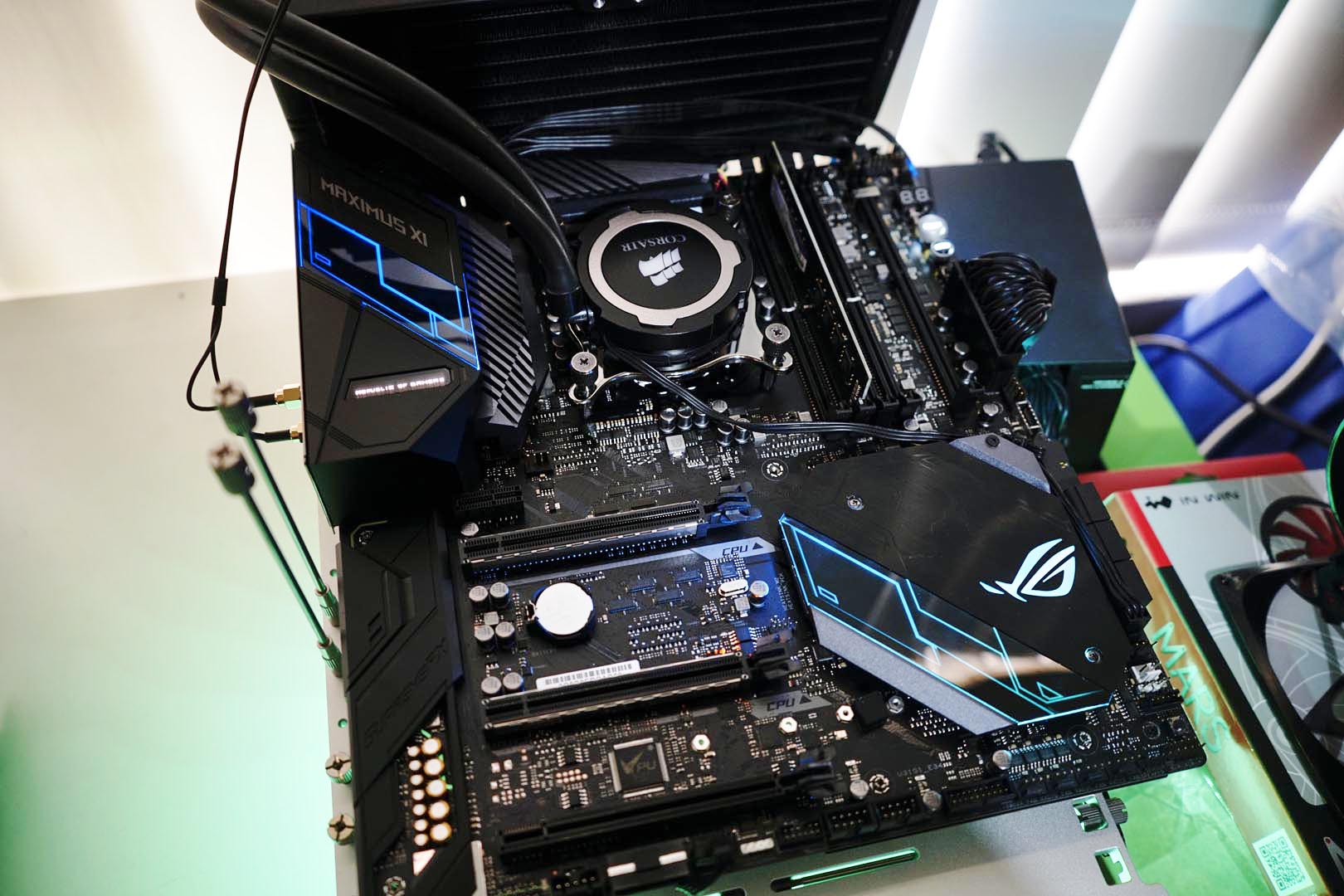
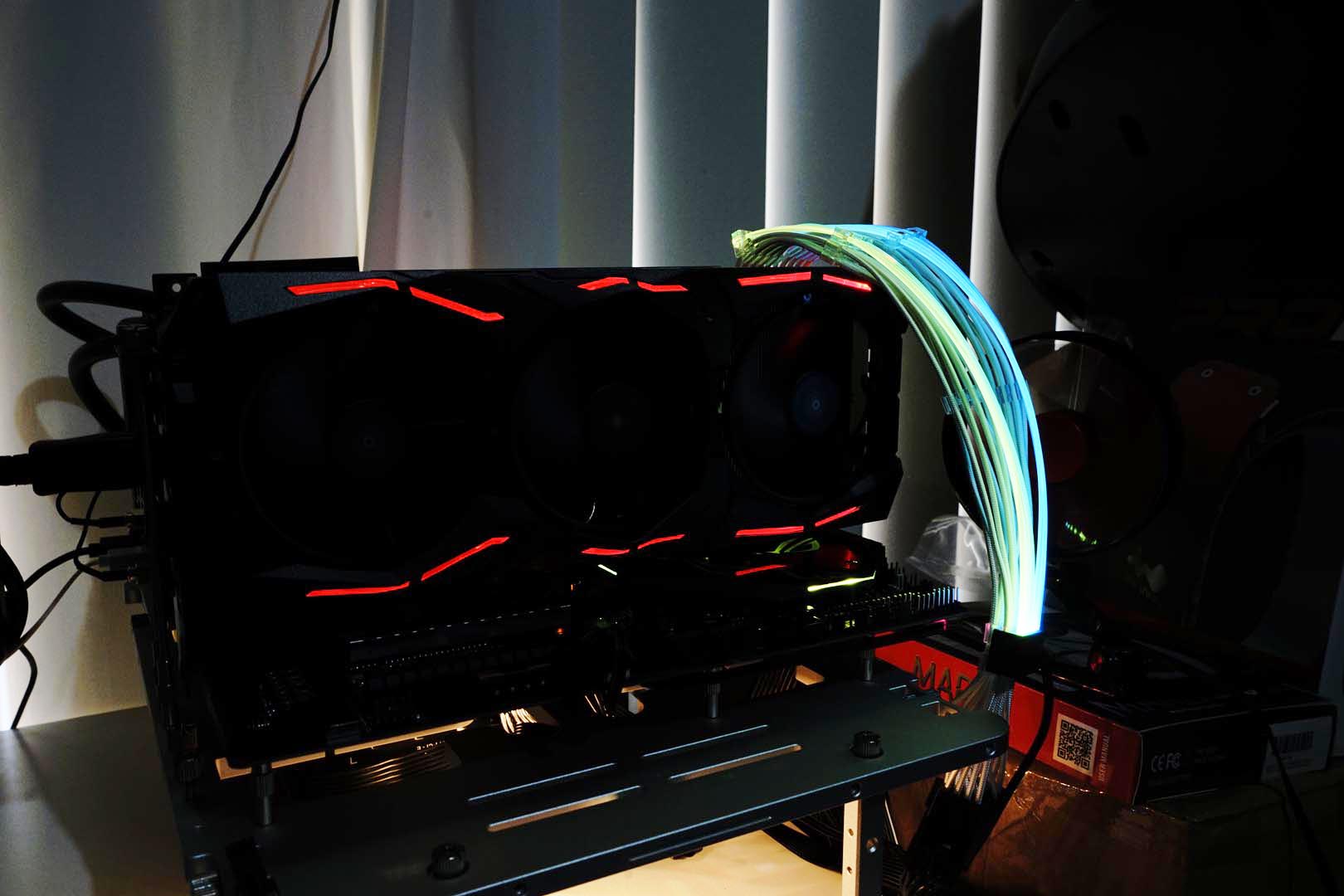
Although the ROG Strix RTX 2080 Ti is top-notch, the frequency might not be enough for some gamers or OCers. The base frequency is the same as the Nvidia version at 1350MHz, and the Boost frequency is only 1650MHz, which is only 15MHz higher. Despite this, thanks to the powerful cooling system and the conservative VBIOS settings, the ROG Strix RTX 2080 Ti runs 20°C lower than the nVidia version when running AAA games, making it possible to run at high frequencies for a long time, which increases the performance by 3%.
Under our overclocking capability test, most of the graphics cards we tested have a maximum frequency of 2040MHz in the 3DMark valid score test, while the ROG Strix RTX 2080 Ti has reached a frequency of 2130MHz.
Unfortunately, 2130MHz will cause the program to crash sometimes, to keep the testing software running smoothly, we dropped the frequency to 2100MHz and passed 3DMARK Time Spy and Time Spy Extreme.
6676 | 3DMARK Time Spy Extreme
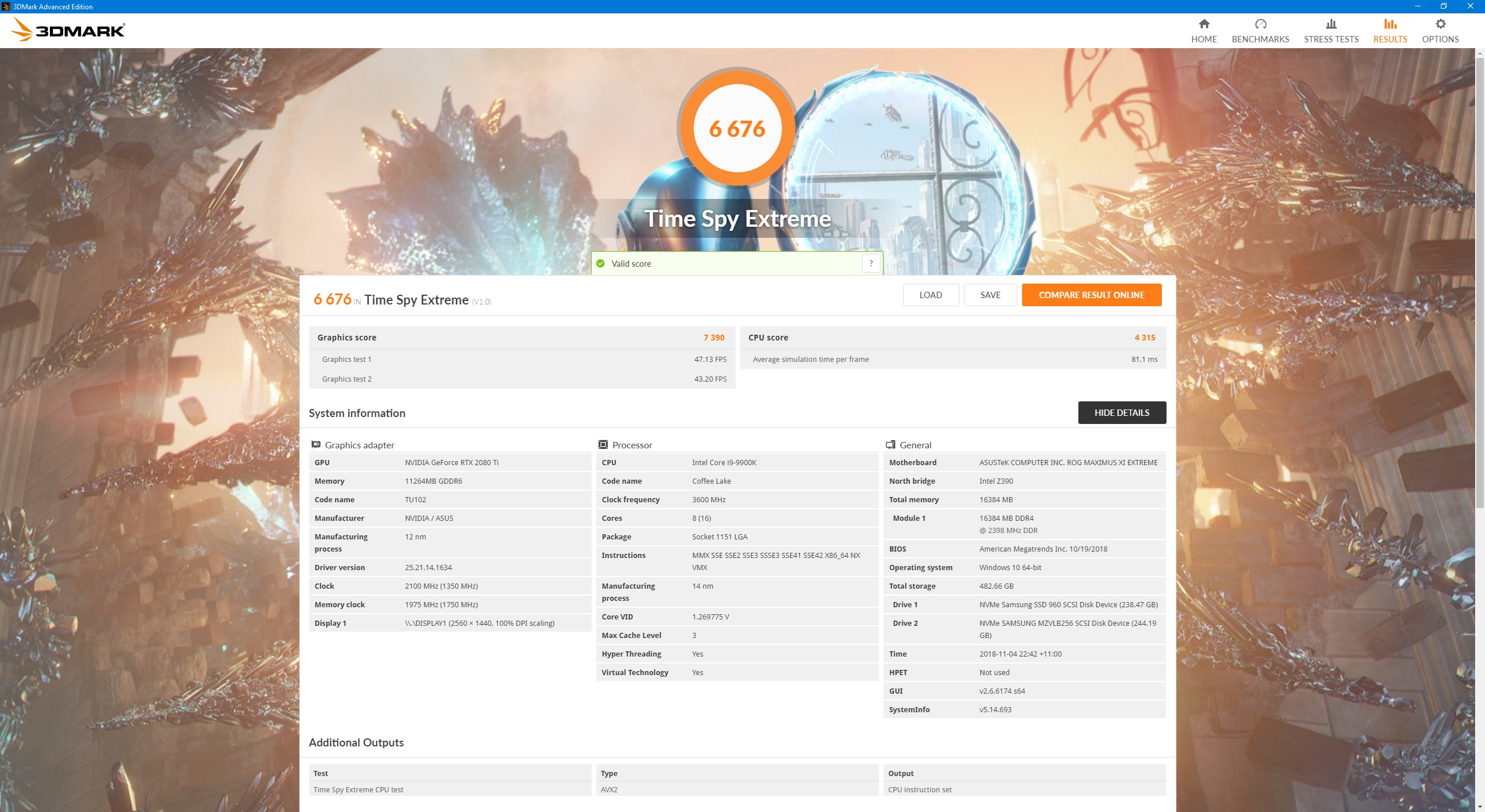
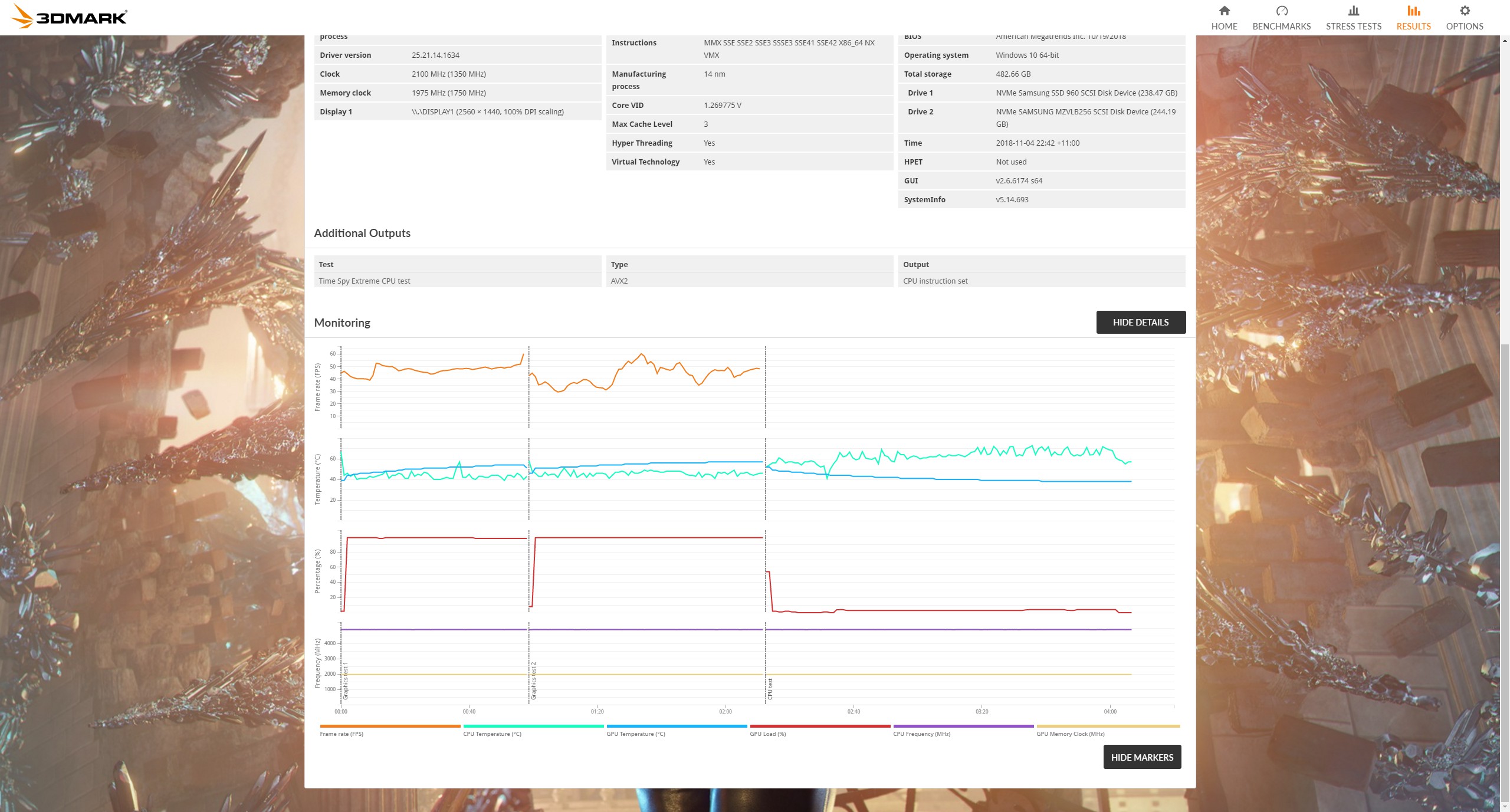
However, we are not satisfied with this score. After some minor adjustments, we decided to keep the frequency at 2115MHz.
In the 3DMARK Fire Strike testing, we got to the top 100 of the FSE and FSU Hall of Fame.
28503 | 3DMARK Fire Strike https://www.3dmark.com/fs/16942720
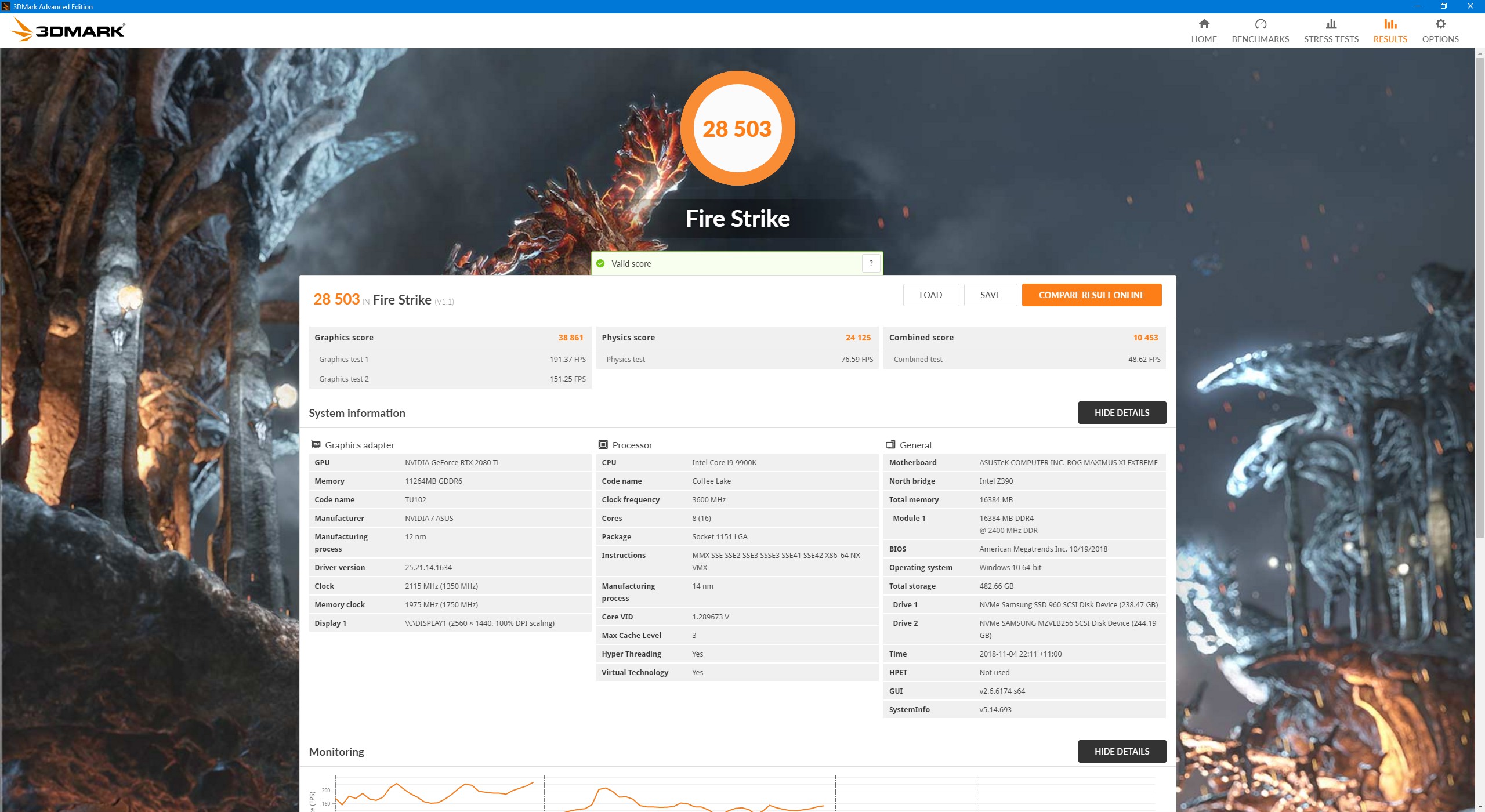
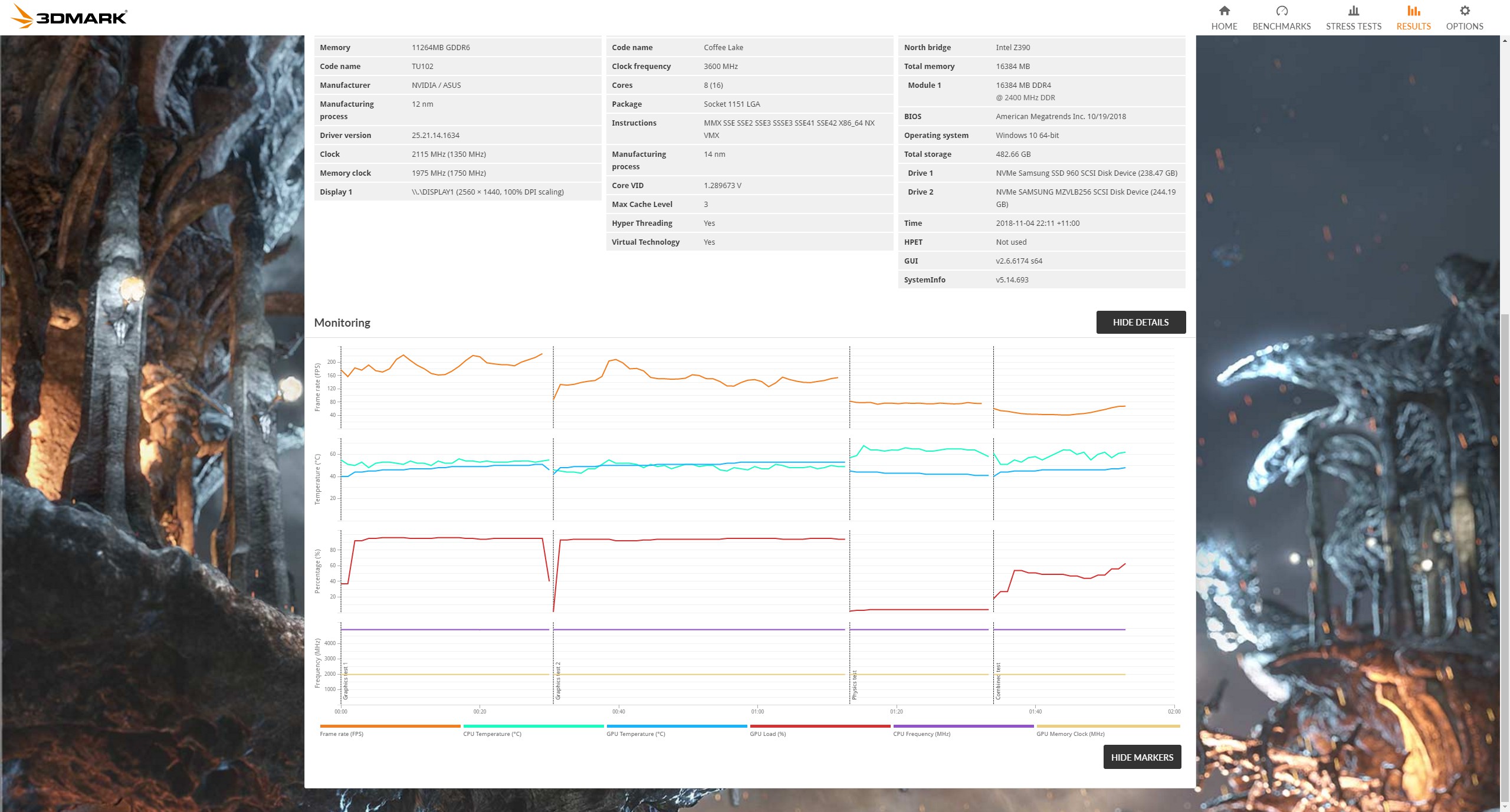
17755 | 3DMARK Fire Strike Extreme https://www.3dmark.com/fs/16942770
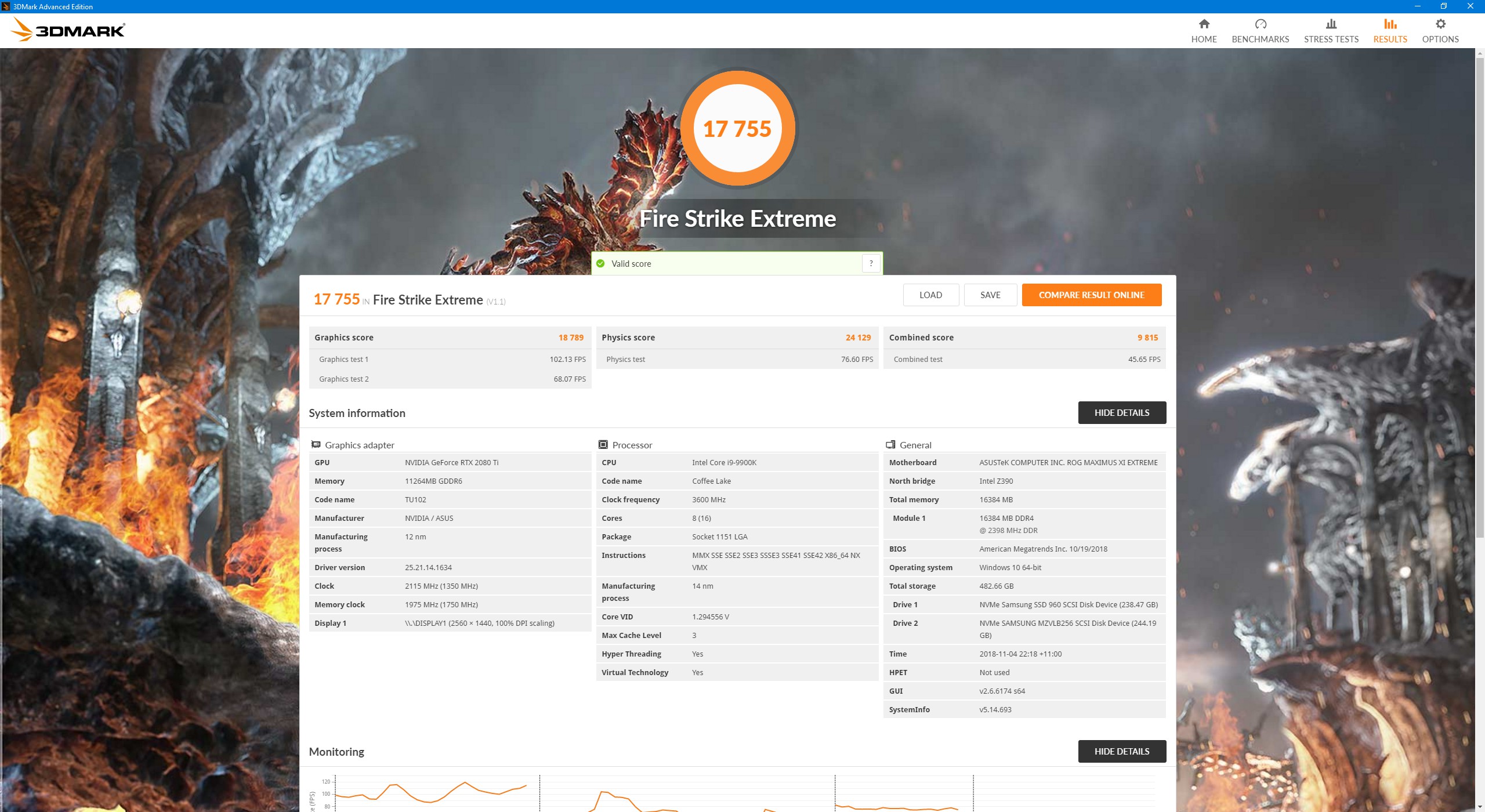
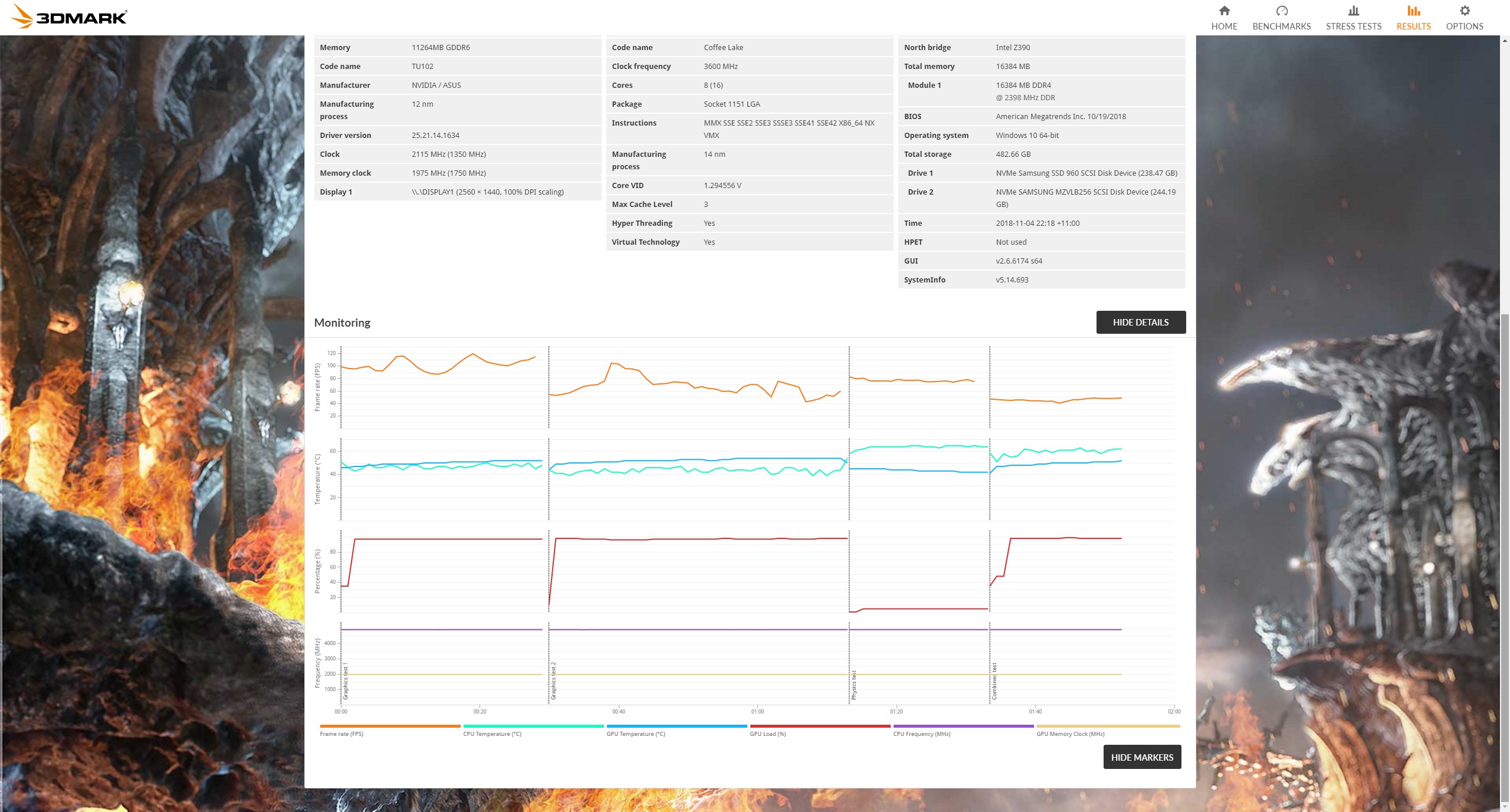
3DMARK Fire Strike Extreme HOF RANK
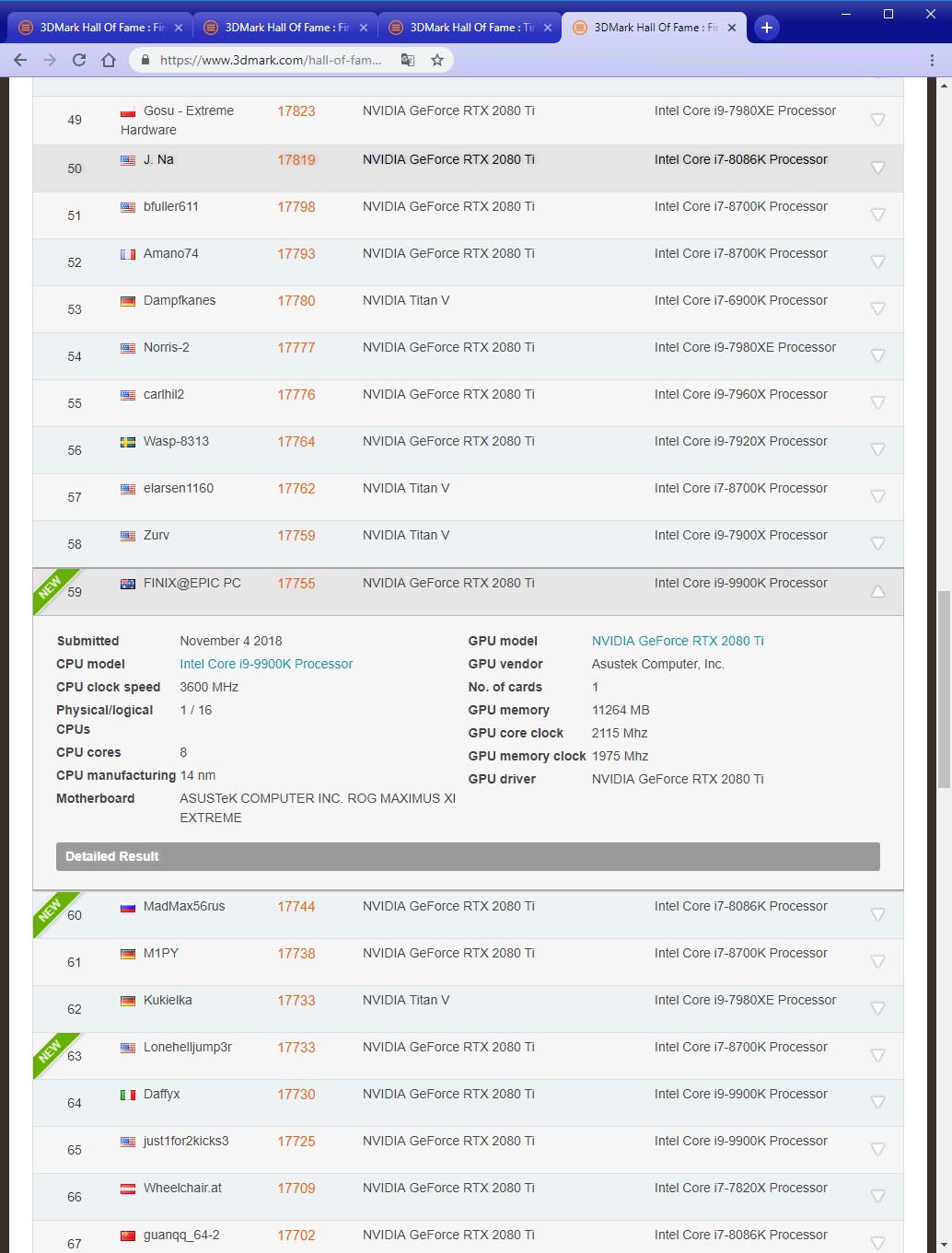
9320 | 3DMARK Fire Strike Ultra https://www.3dmark.com/fs/16942908
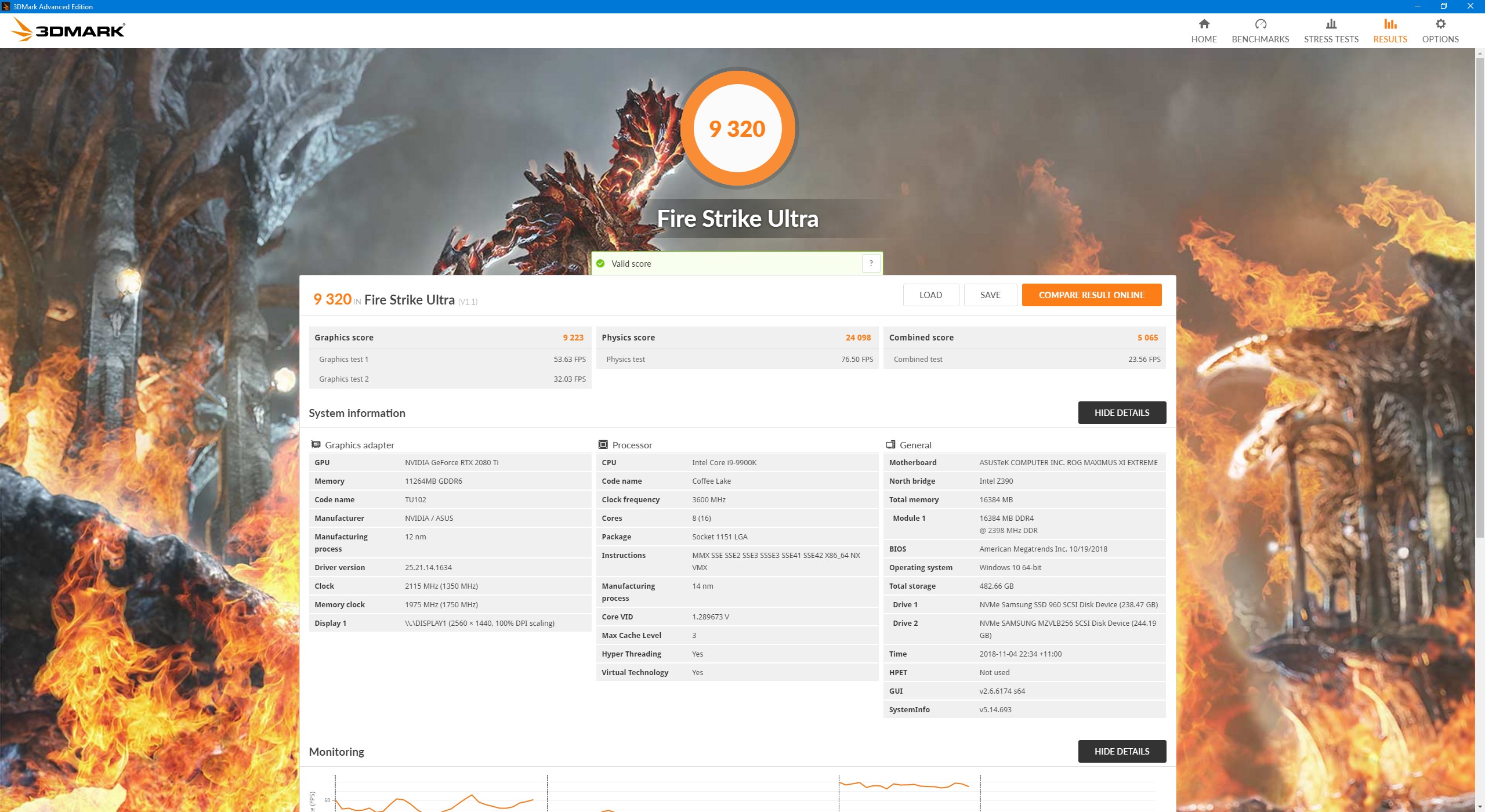
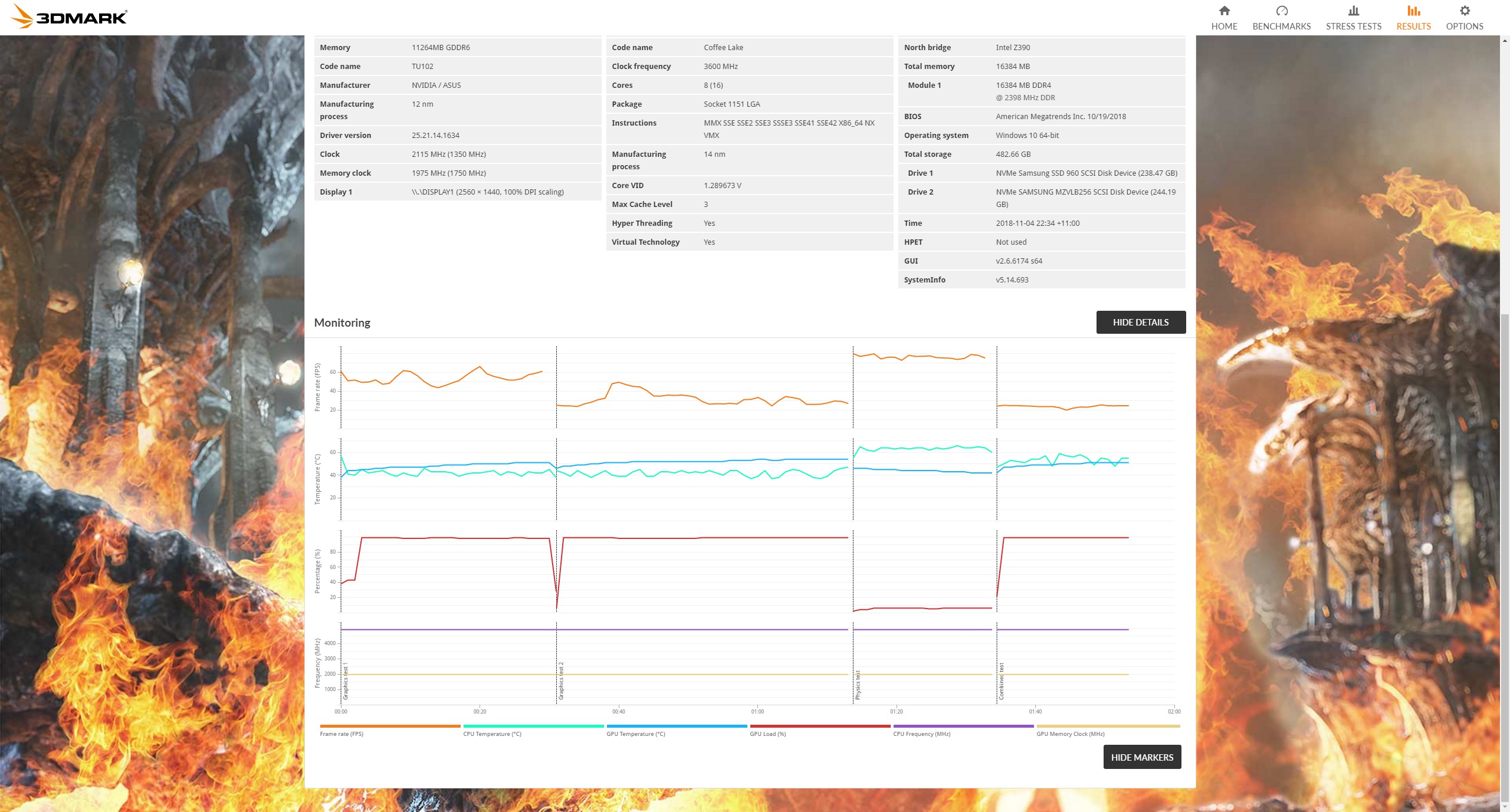
3DMARK Fire Strike Ultra HOF RANK

Overall
ASUS is the last manufacturer to launch their flagship Strix 2080TI. In appearance, it adheres to the STRIX series’ consistent style, without a fancy RGB front-end and complicated lighting effects. ASUS has opted to focus on solid quality design and luxurious materials to make the graphics card far superior to other brands in overclocking and stability. This is in tandem with additional features to the RTX 20 series cards, such as dual BIOS, onboard RGB switch and other user-friendly improvements. In terms of the price, ASUS is about 13% more expensive than other brands, but for its performance and materials, as well as overclocking and stability, it is not that expensive. This card will become a milestone for ASUS.
ASUS ROG STRIX RTX 2080TI O11G OFFICIAL WEBSITE: https://www.asus.com/au/Graphics-Cards/ROG-STRIX-RTX2080TI-O11G-GAMING/


